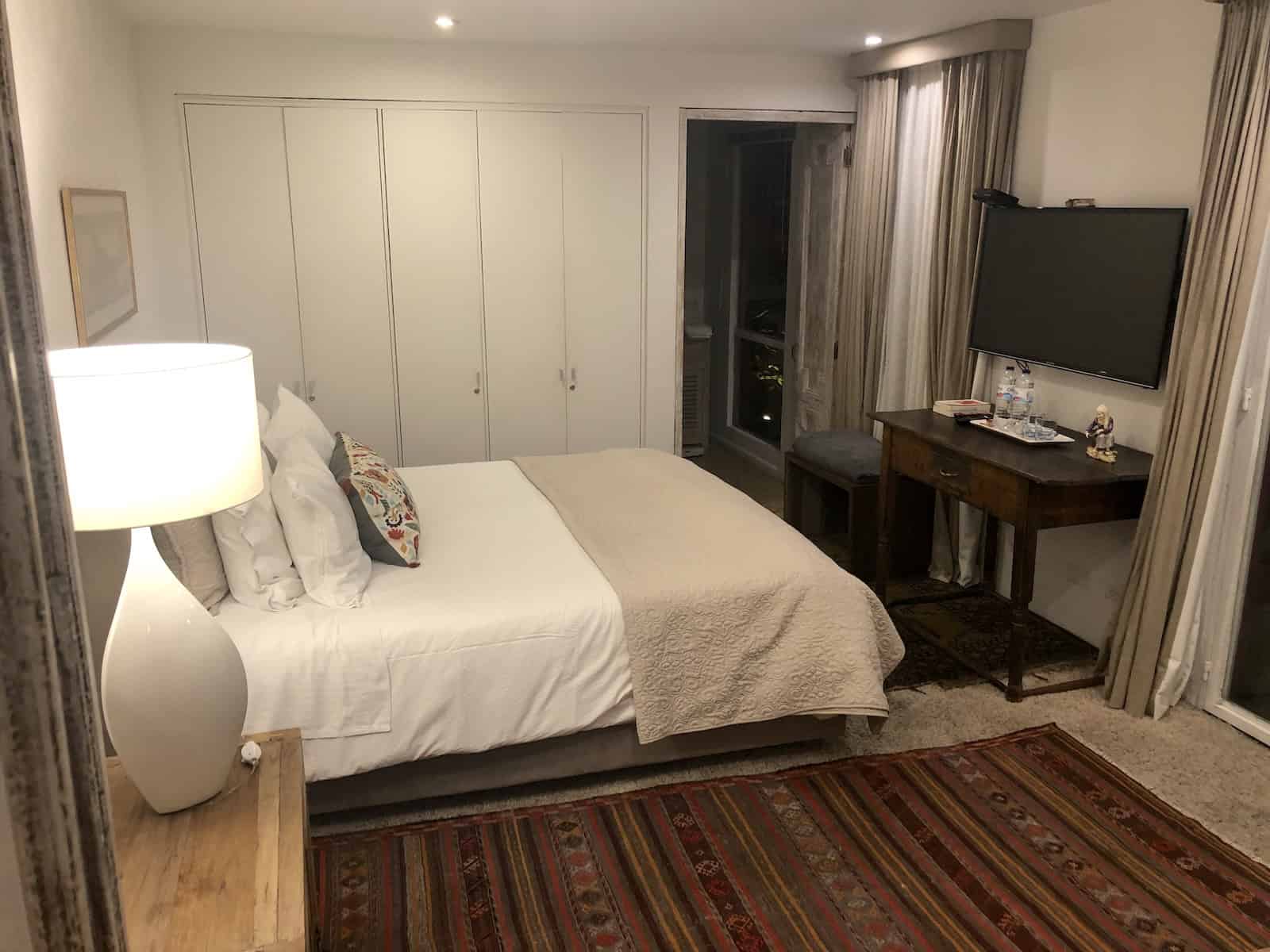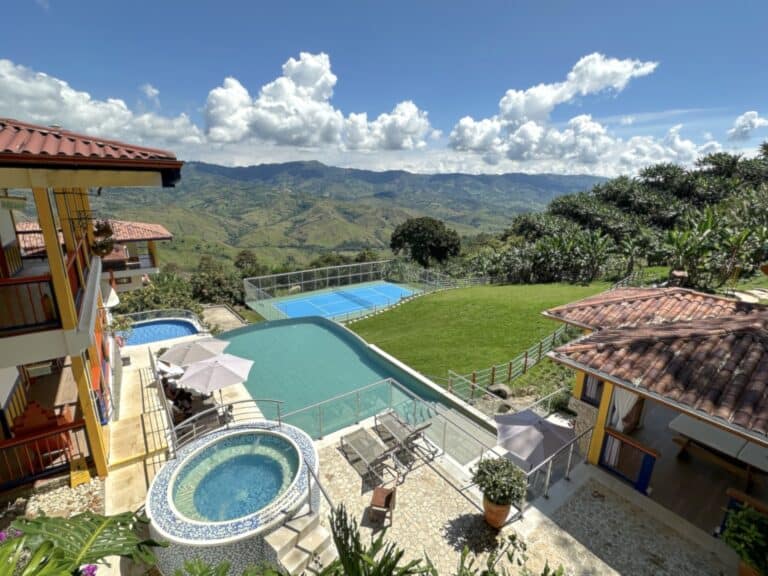Last updated on .
Ortaköy is a picturesque village on the European side of the Bosporus in Istanbul, Turkey. It’s been overrun by tourists but is still an enjoyable place to spend some time.

Introduction to Ortaköy
Ortaköy, which is located in the Beşiktaş district of the city and just under the Bosporus Bridge, is popular for its restaurants, nightclubs, cafés, street food, and shopping.
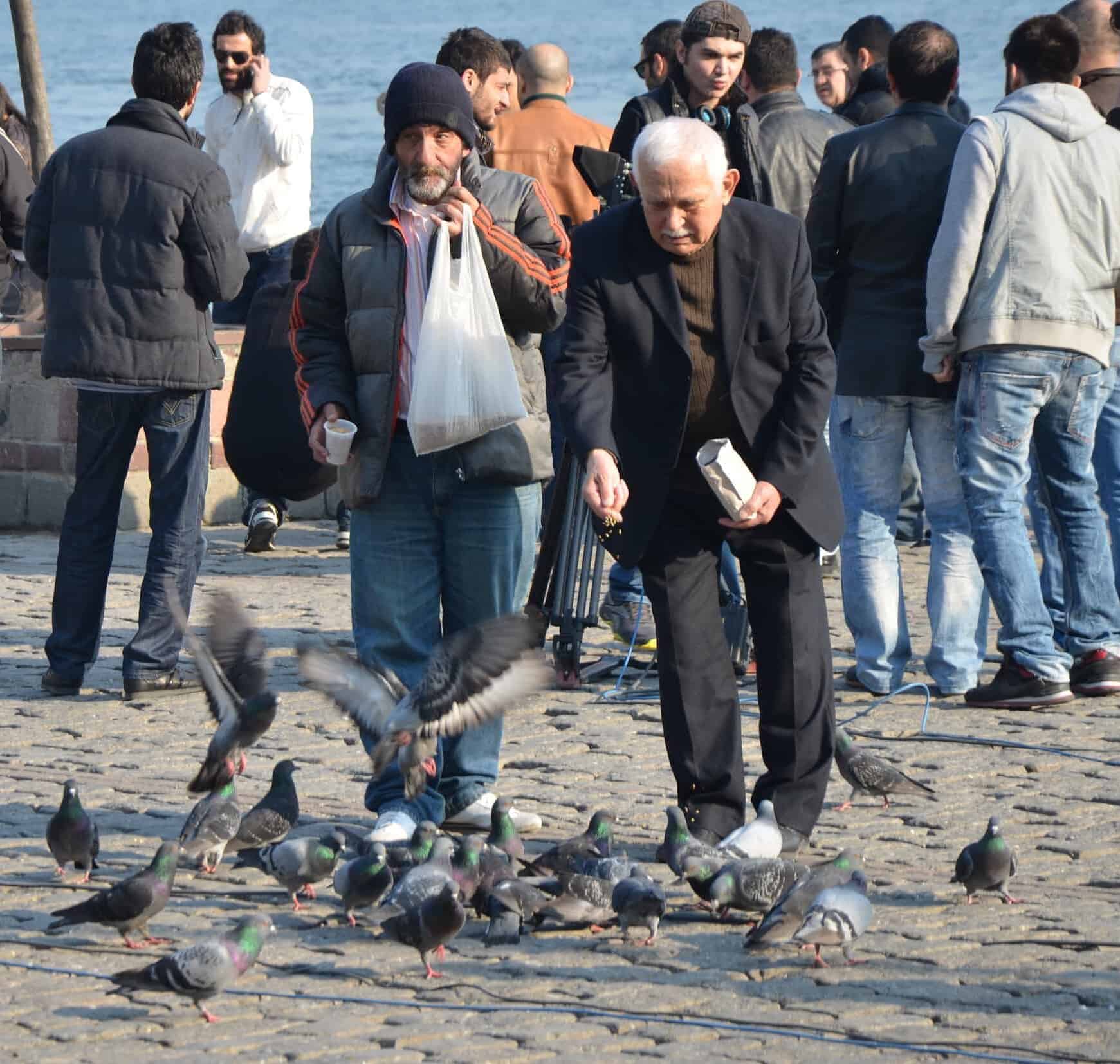
Ortaköy was known as Agios Phocas (Άγιος Φωκάς) and Mesachori (Μεσαχώρι) during Byzantine times. The village was a cosmopolitan area during Ottoman times. It hosted communities of Greeks, Armenians, Jews, and Muslims. Jews began to leave after the creation of Israel in 1948, and most Greeks and Armenians left after the 1955 Istanbul Pogrom. Today, there are very few non-Muslims living there.
Getting to Ortaköy
To get to Ortaköy, you can take any bus heading north along the Bosporus from Kabataş or Beşiktaş. You can also take one of the infrequent ferries on the City Ferry Lines (Şehir Hatları) to the Ortaköy Ferry Terminal.
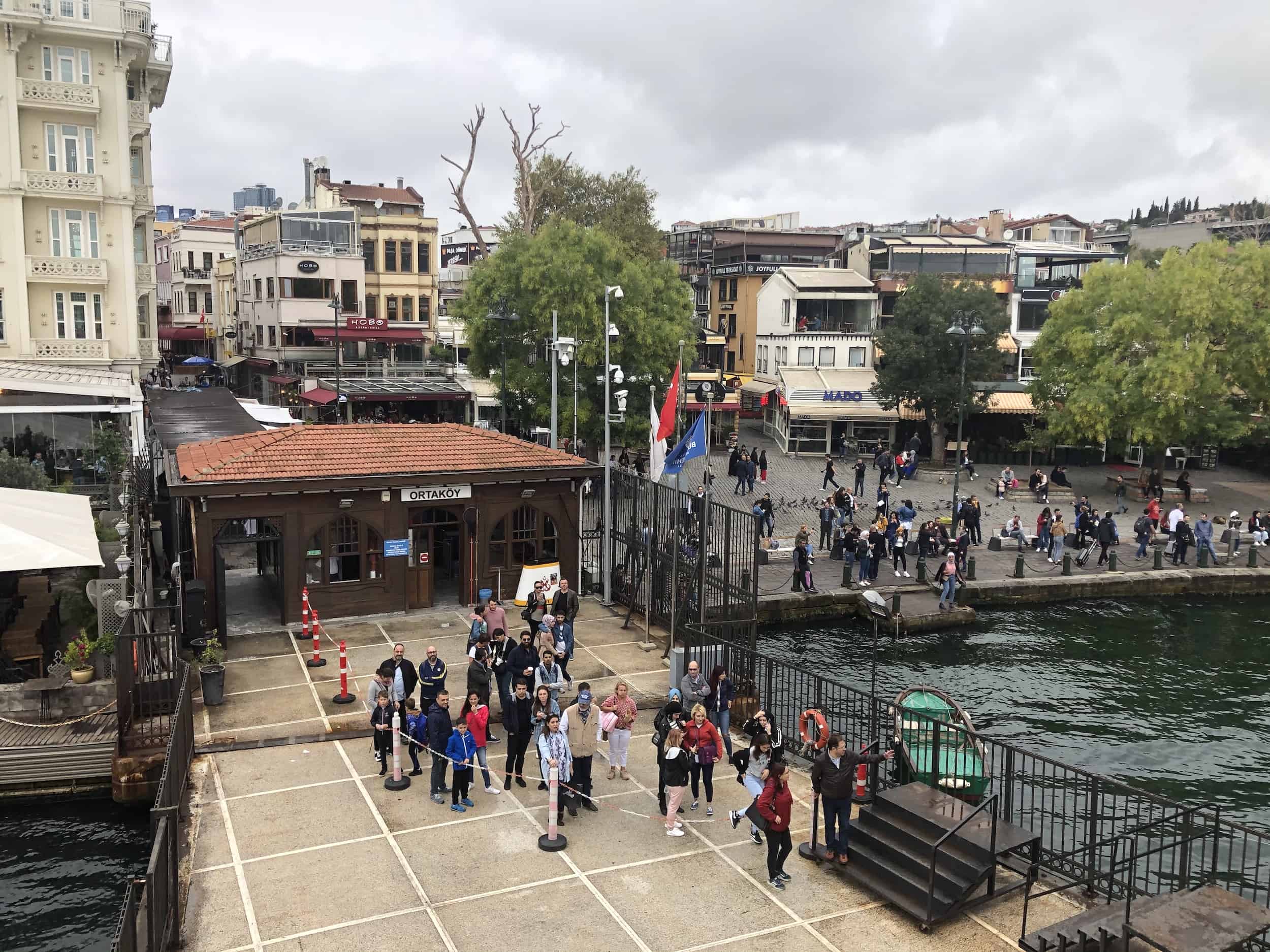
Ortaköy Square
The heart of Ortaköy is Ortaköy Square (Ortaköy Meydanı). It sits right on the Bosporus and is surrounded by cafés and restaurants. The square is a great place for people watching.
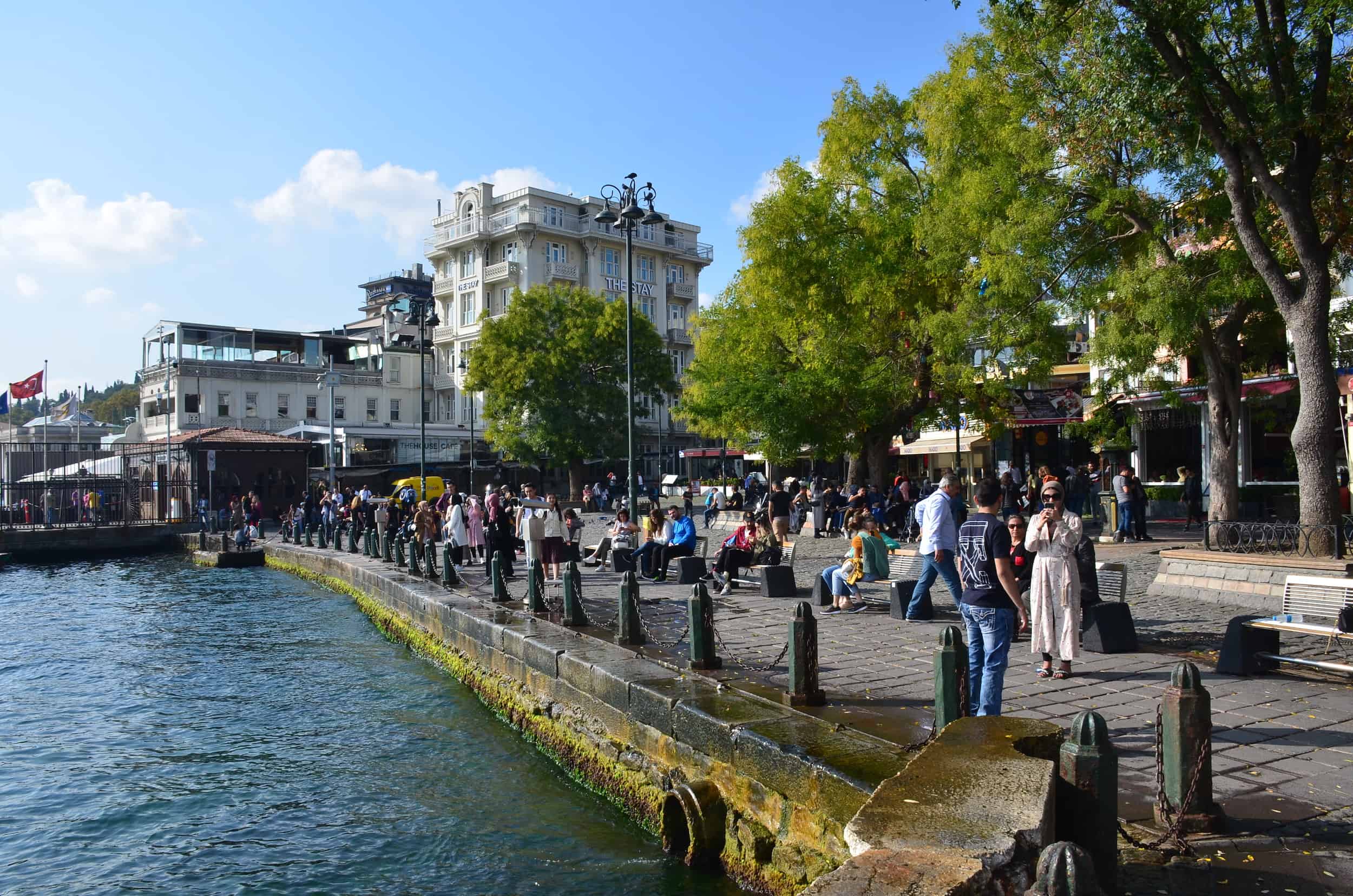
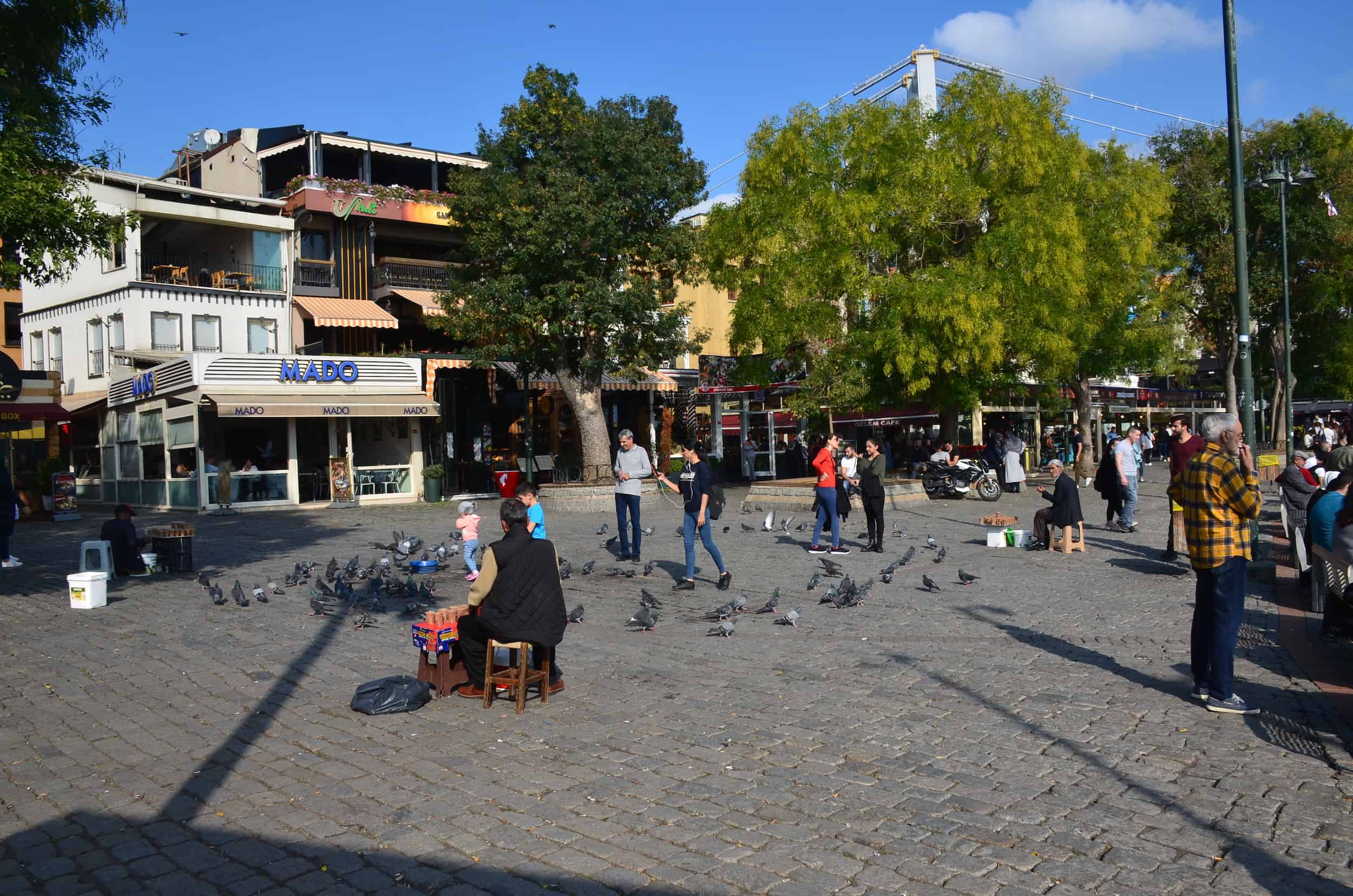
The ferry terminal sits on the south side of the square while the Büyük Mecidiye Mosque is on the north side.
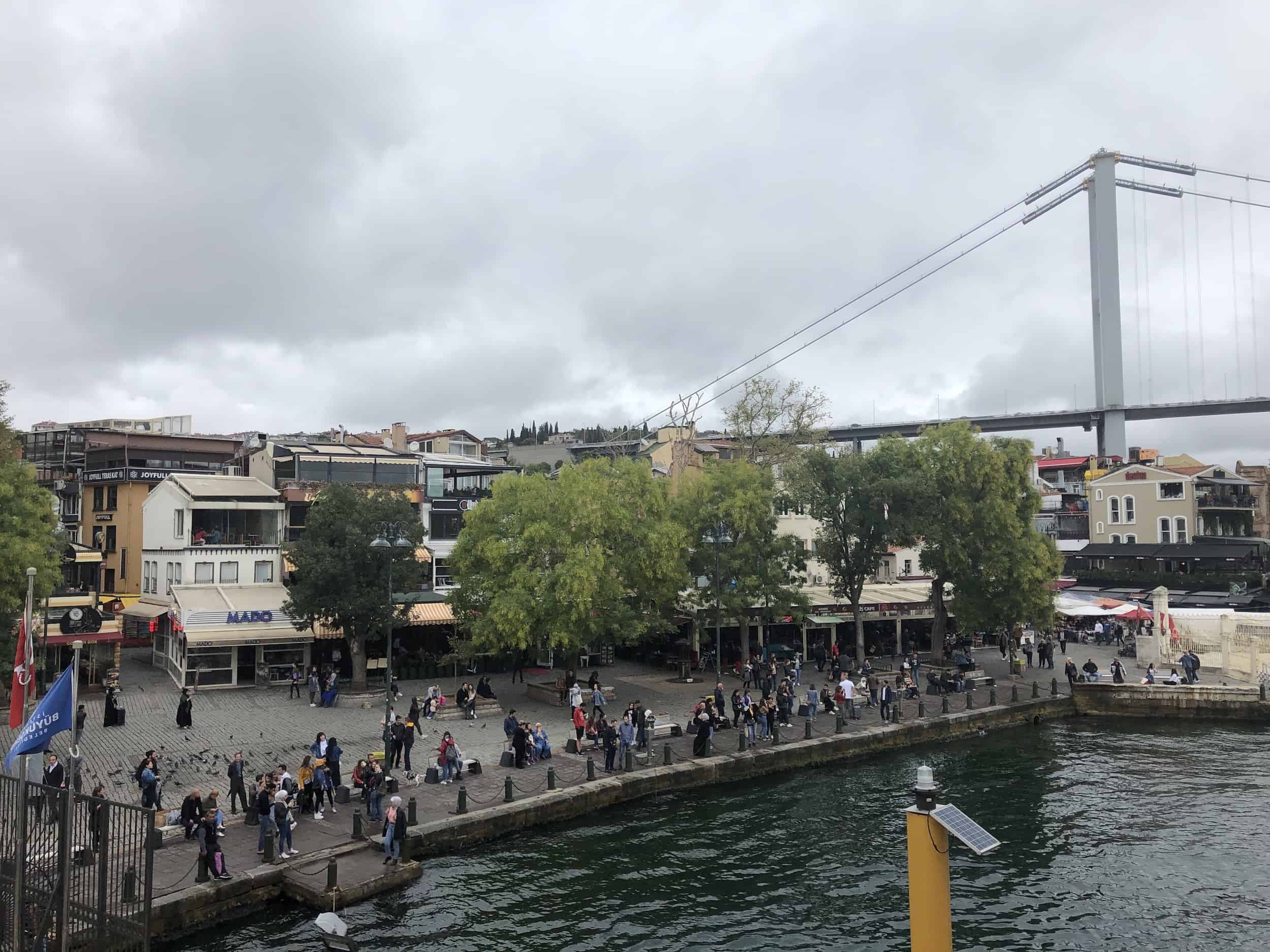
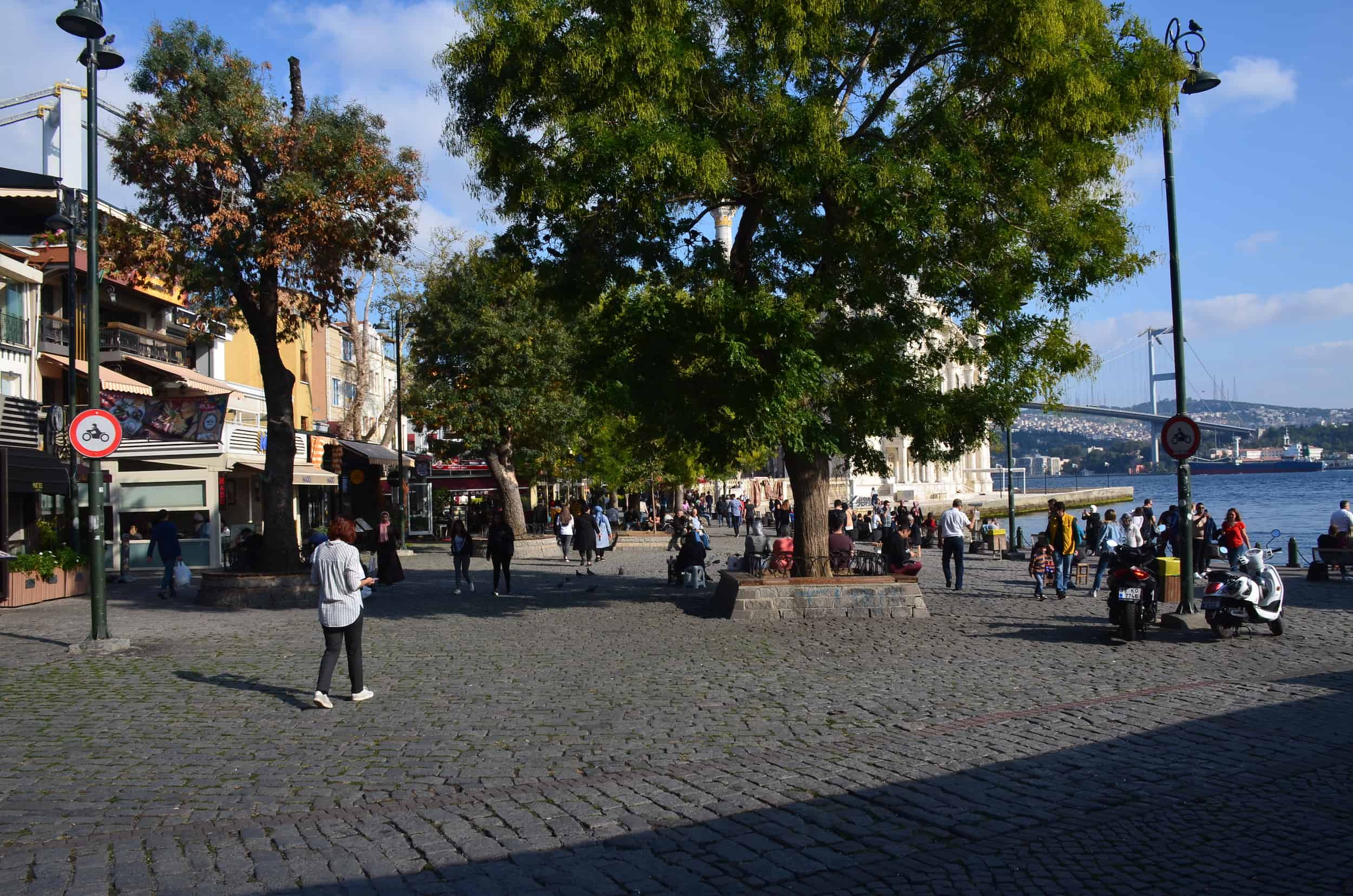
One of the most iconic photos of Istanbul can be taken from the south side of Ortaköy Square. It includes the Büyük Mecidiye Mosque with the Bosporus Bridge in the background.
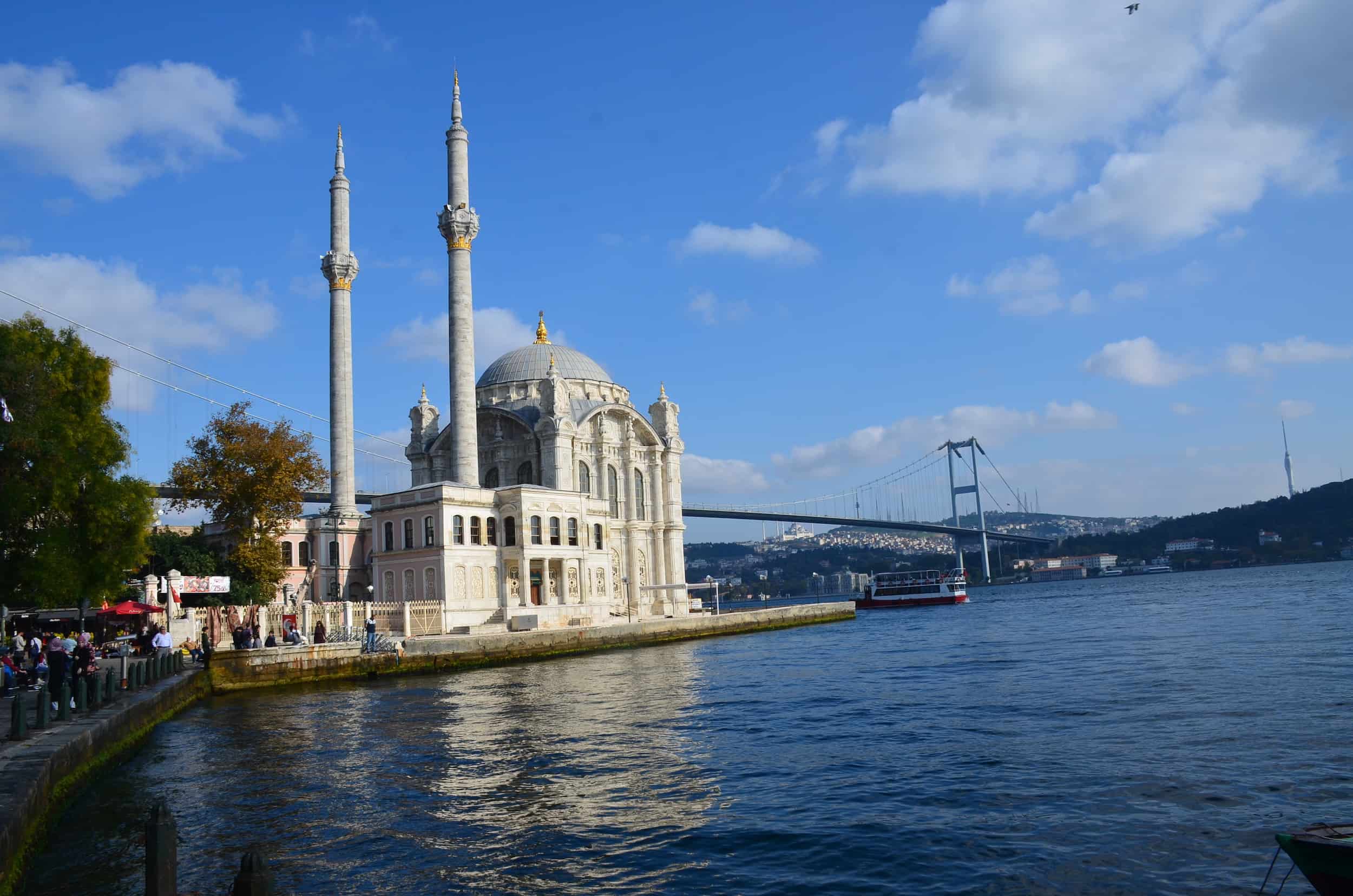
Damat Ibrahim Paşa Fountain
The Damat Ibrahim Pasha Fountain (Damat İbrahim Paşa Çeşmesi) is on the north side of the square. It was built in 1723 by Nevşehirli Damat Ibrahim Pasha (1662-1730), a Grand Vizier under Sultan Ahmed III.
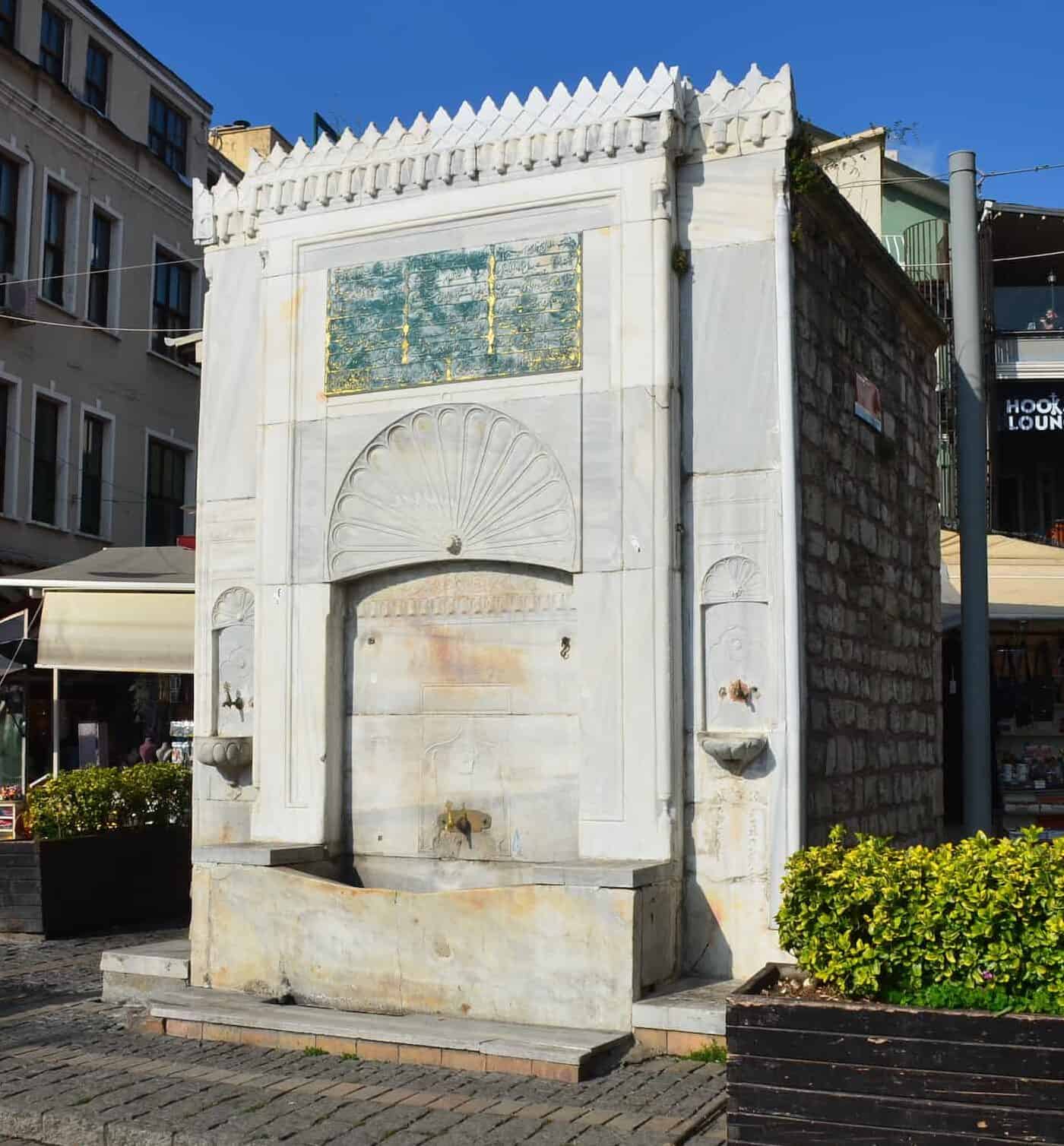
The inscription on the fountain is a verse by Şakir Ahmed Pasha. In 1992, the fountain was moved back from its original location in order to make it more visible.
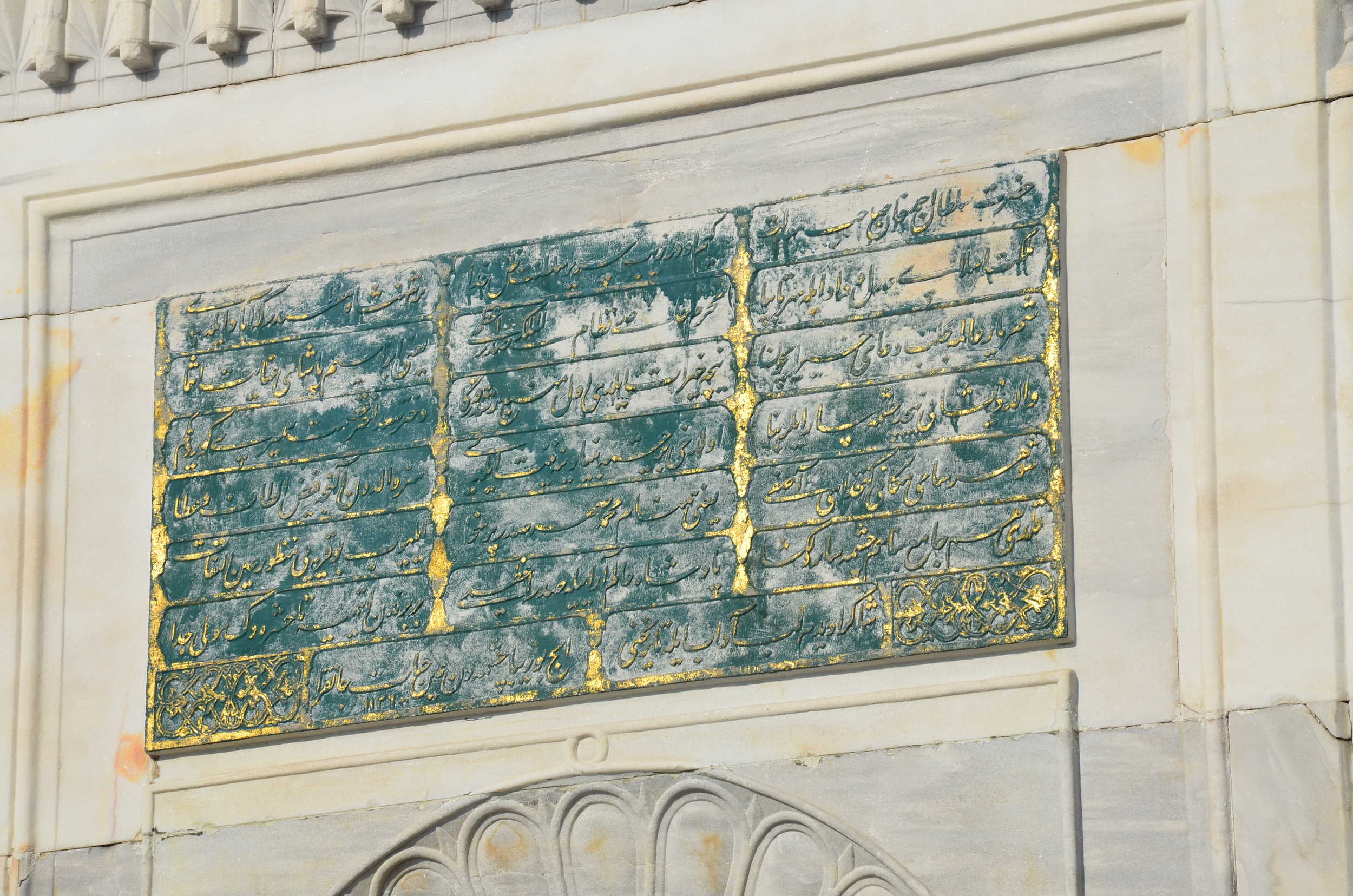
Büyük Mecidiye Mosque
The Büyük Mecidiye Mosque (Büyük Mecidiye Camii), also known as the Ortaköy Mosque (Ortaköy Camii), is the most important architectural and historic landmark in the village.
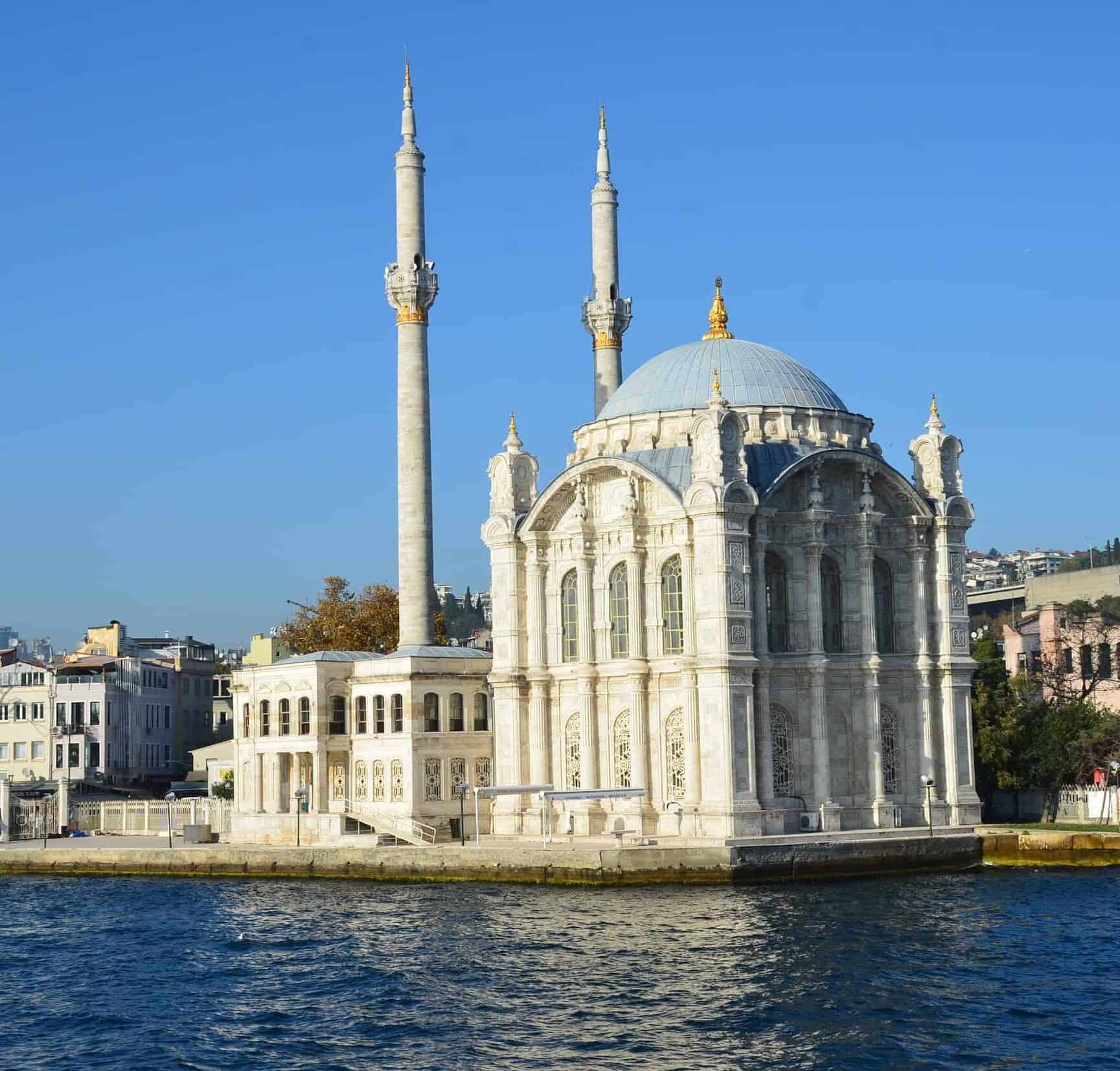
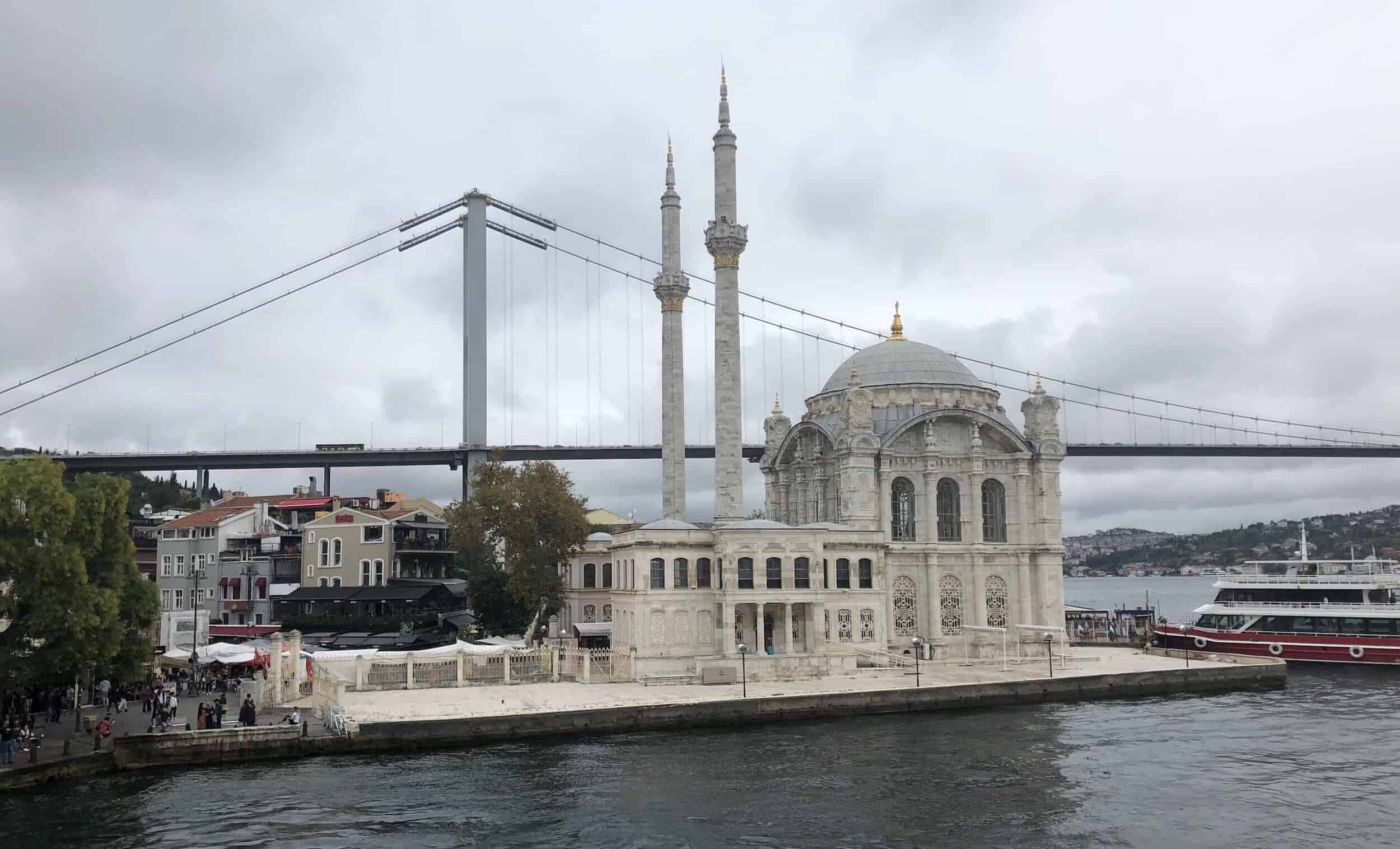
History of the Mosque
The small Mahmud Ağa Mosque (Mahmud Ağa Mescidi) stood on the site from 1720 to 1730. That mosque was demolished by Nevşehirli Damat Ibrahim Pasha. Kethüda Mehmed Efendi built another mosque, the Mehmed Kethüda Mosque (Mehmed Kethüda Camii), in its place, but it was damaged over time.
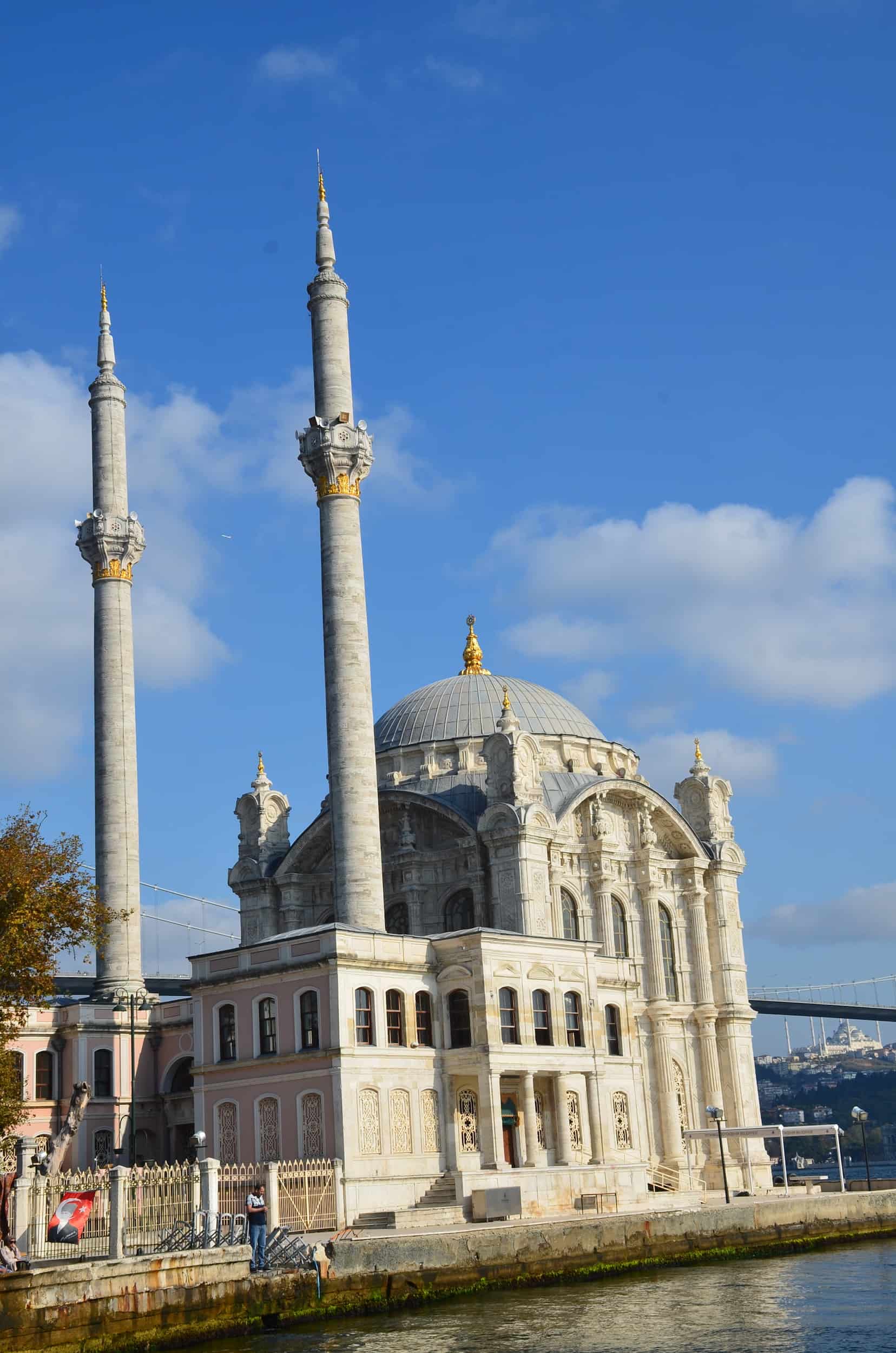
The Büyük Mecidiye Mosque was built between 1853 and 1856 by Sultan Abdülmecid I. It was designed by Ottoman Armenian architect Garabet Amira Balyan (1800-1866) and his son, Nigoğayos Balyan (1826-1858). The mosque was restored in the 1960s and again between 2011 and 2014.

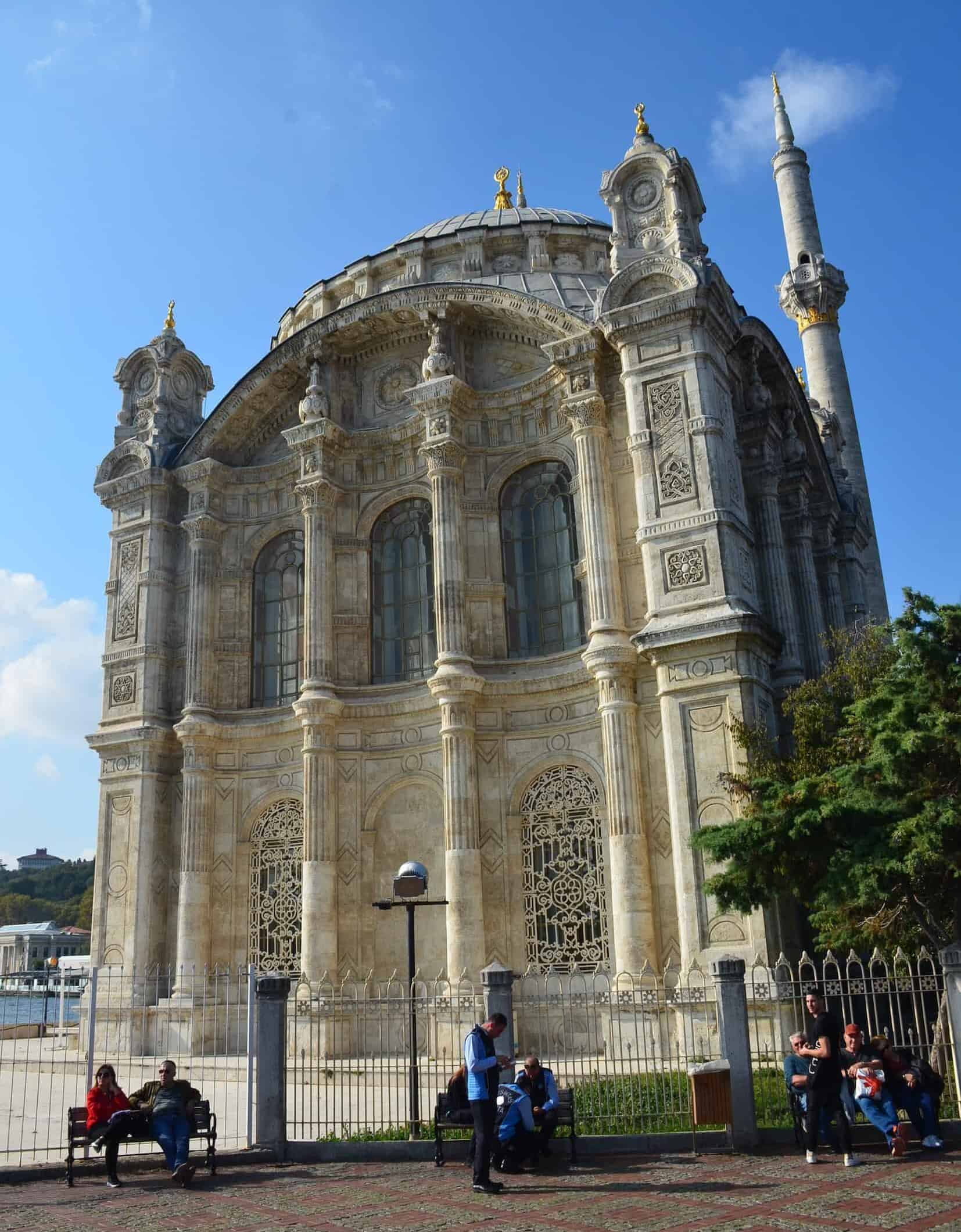
Architecture
The Neo-Baroque mosque has two slender minarets and a single dome. The original dome was made of bricks but was rebuilt with concrete after it had developed cracks.
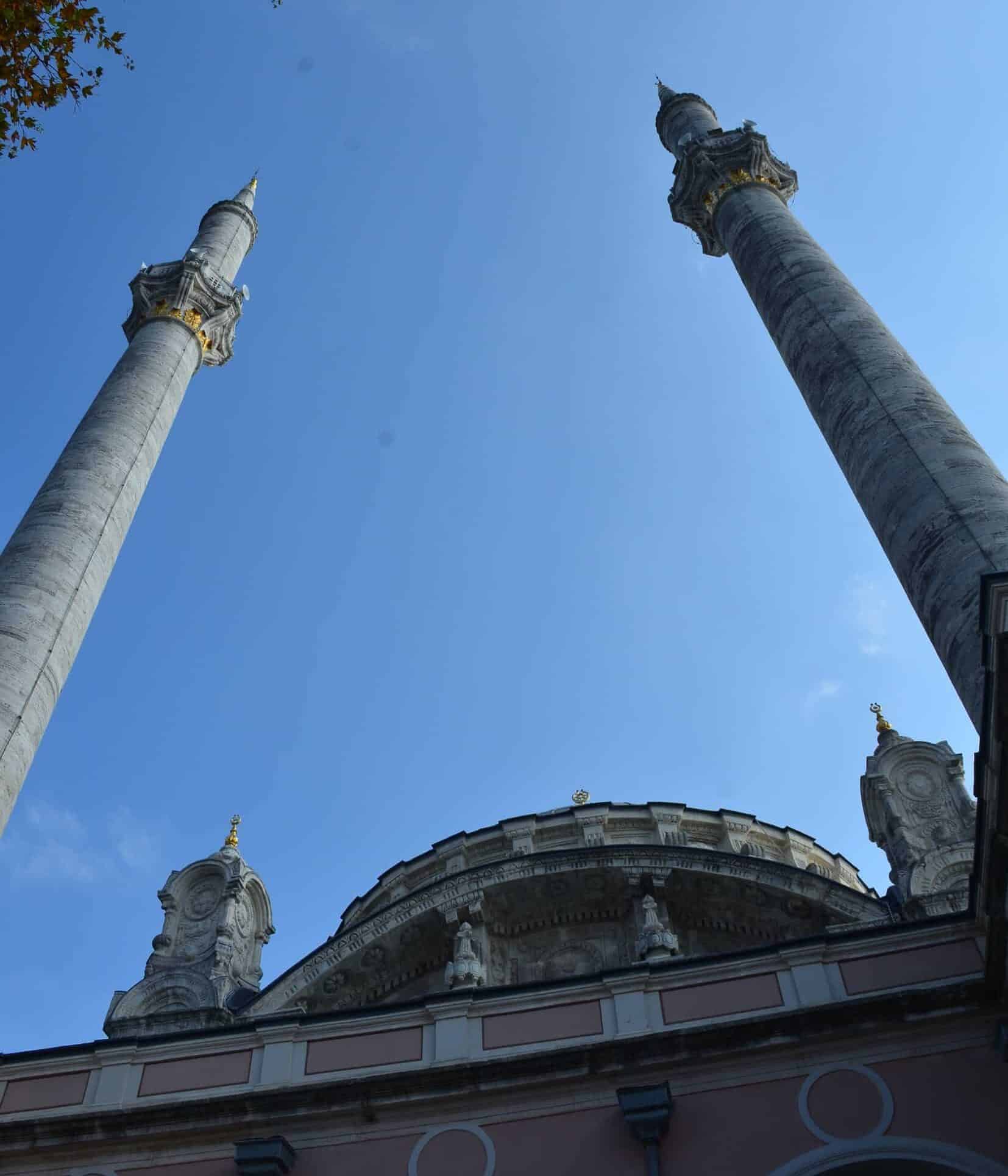
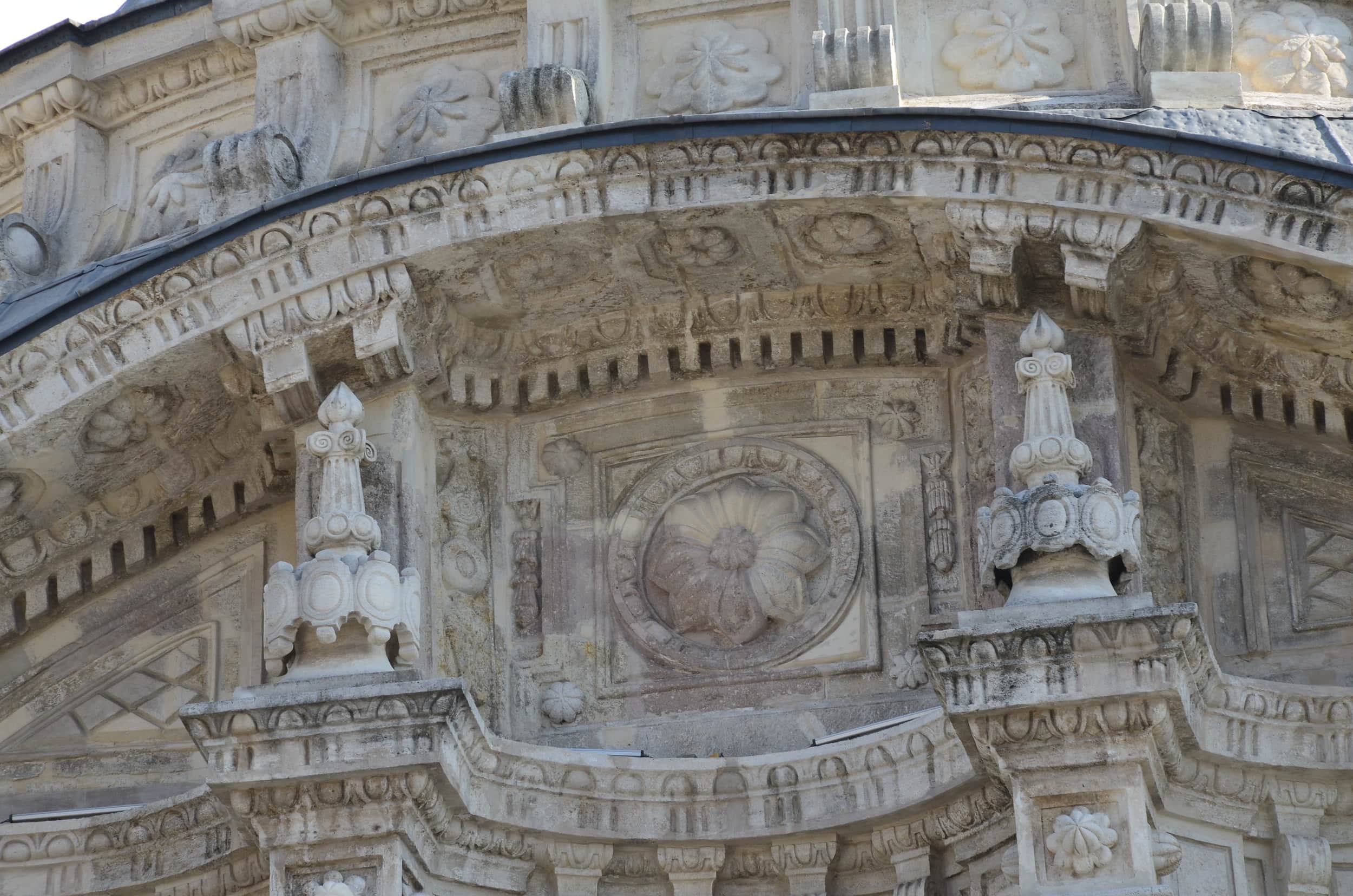
A two-story U-shaped sultan’s apartment surrounds the courtyard of the mosque. A double staircase with 11 steps leads to the entrance. The inscription above the door contains a poem by Ottoman poet Ziver.
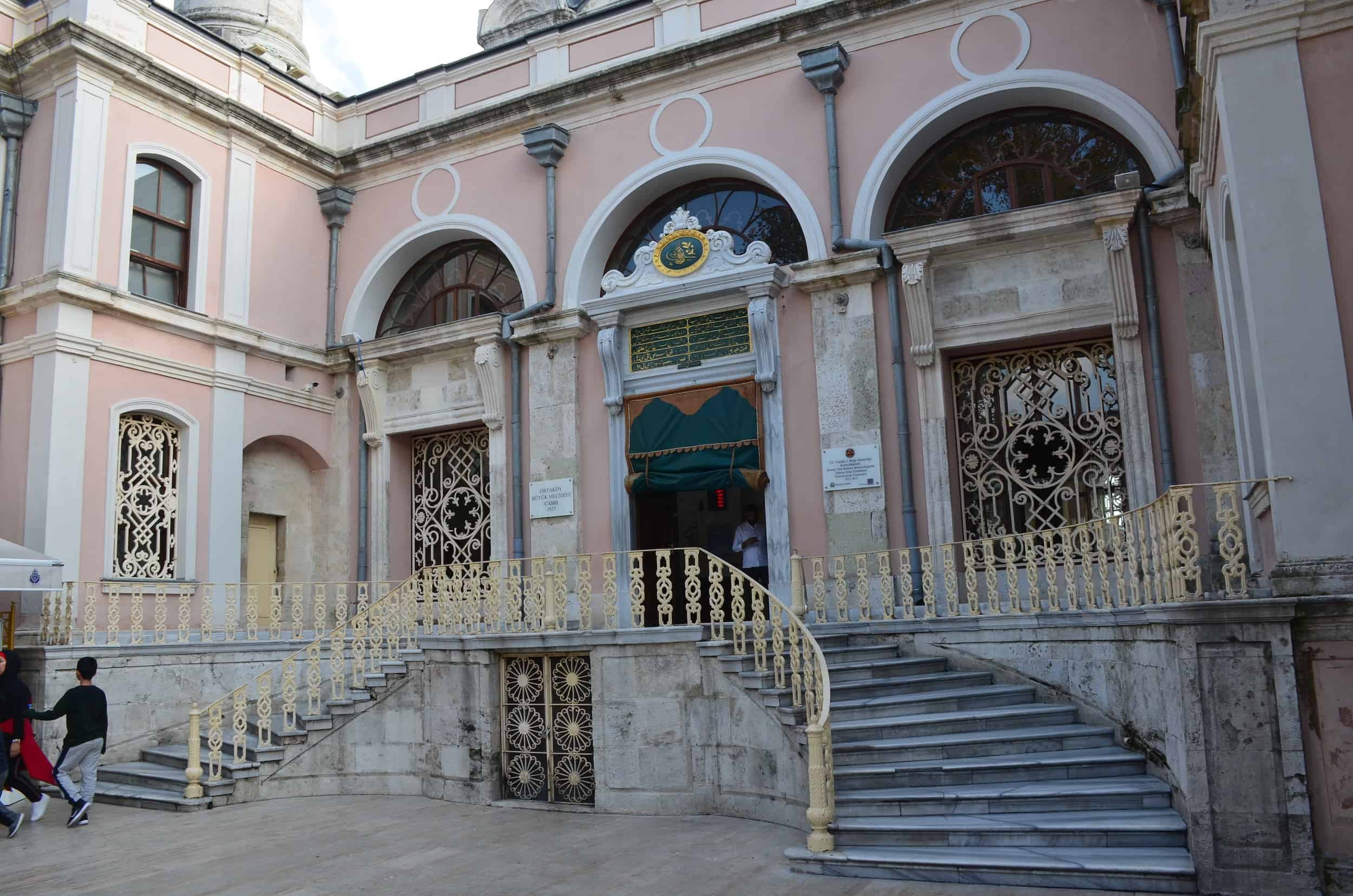
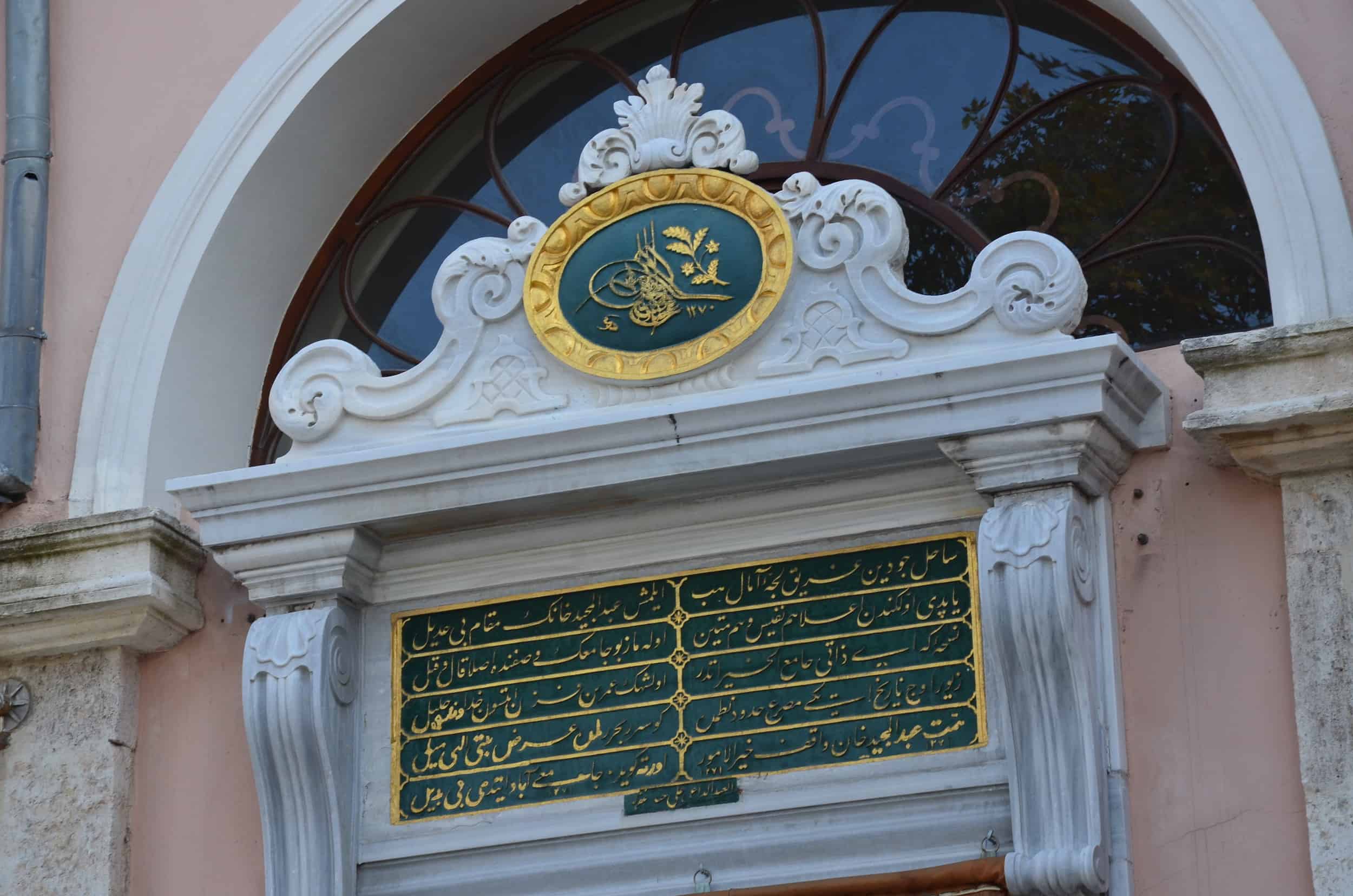
Prayer Hall
The richly decorated prayer hall is on a square plan. It’s beautifully lit by 12 upper and 8 lower windows. The mosque may look small from the outside, but the prayer hall is more spacious than expected.

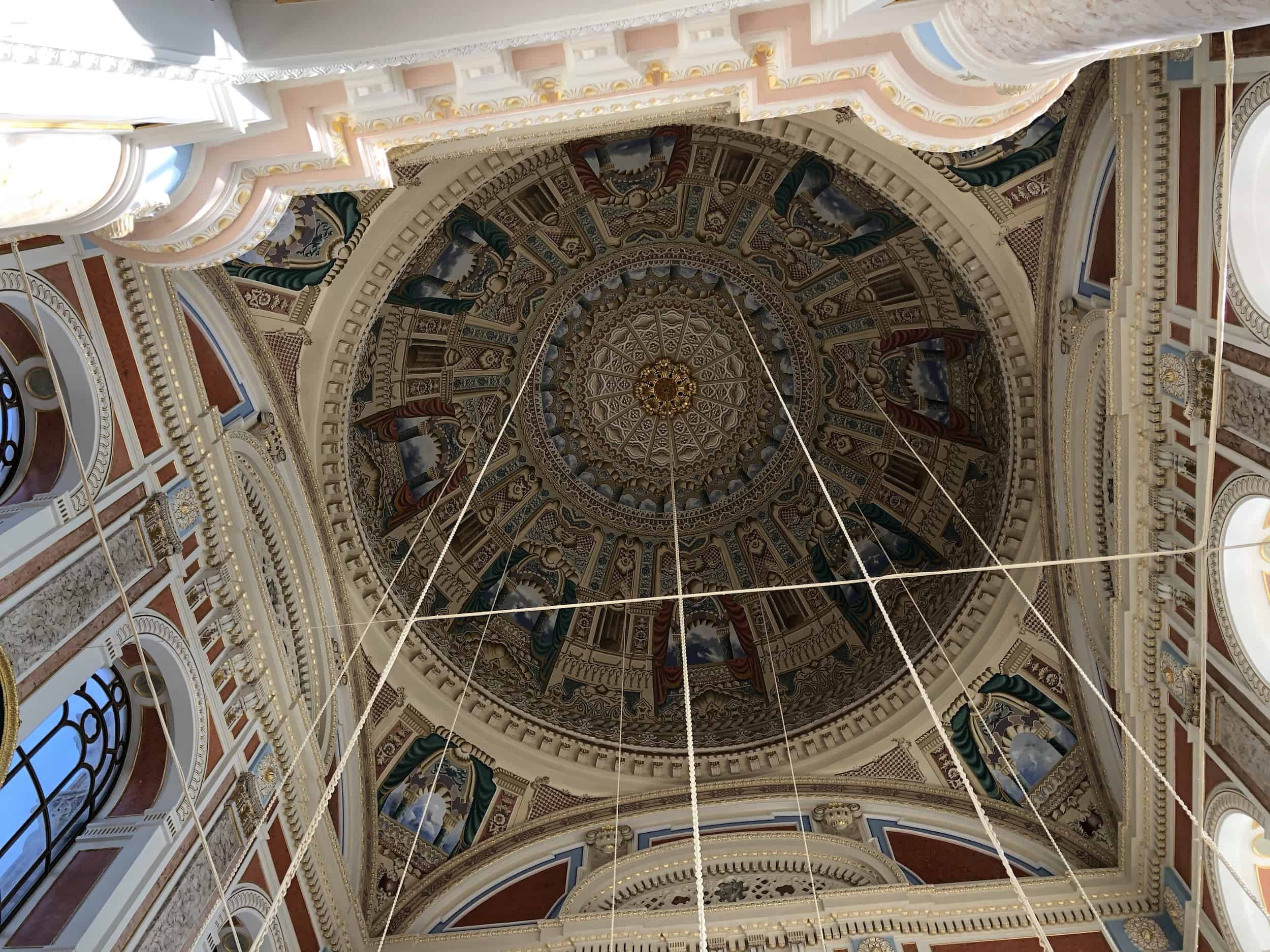
The calligraphy on the minbar was written by Sultan Abdülmecid I himself. The mihrab is made of marble. Calligraphic medallions sit between the upper windows.


Bosporus Views
Right next to the mosque is a fantastic place to view the Bosporus Bridge and the Bosporus. It’s a popular place to take photos, and there’s also a café at the edge of the water. A small park with benches a few steps from the shore allows visitors to sit and take in the scenery.
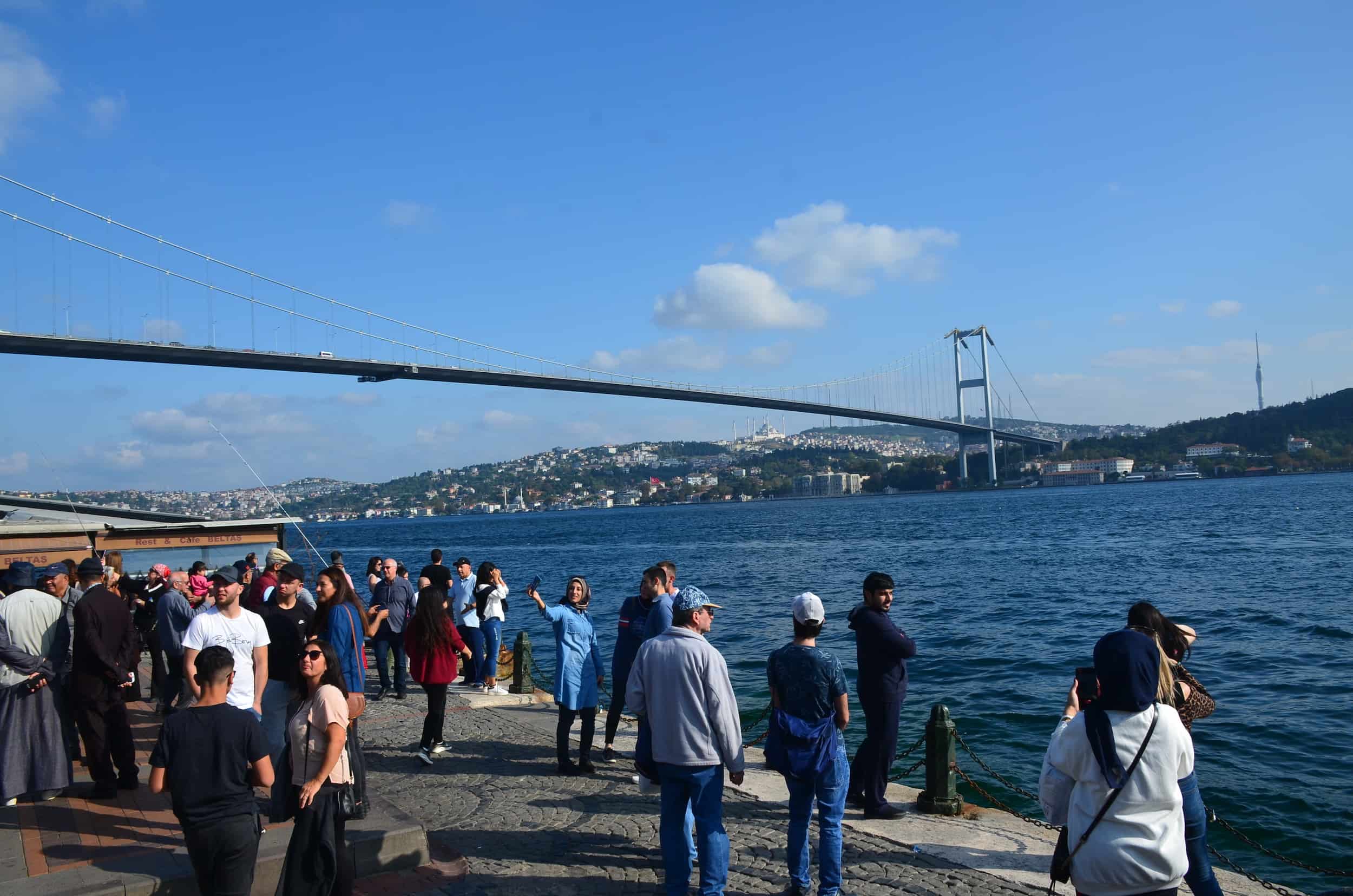
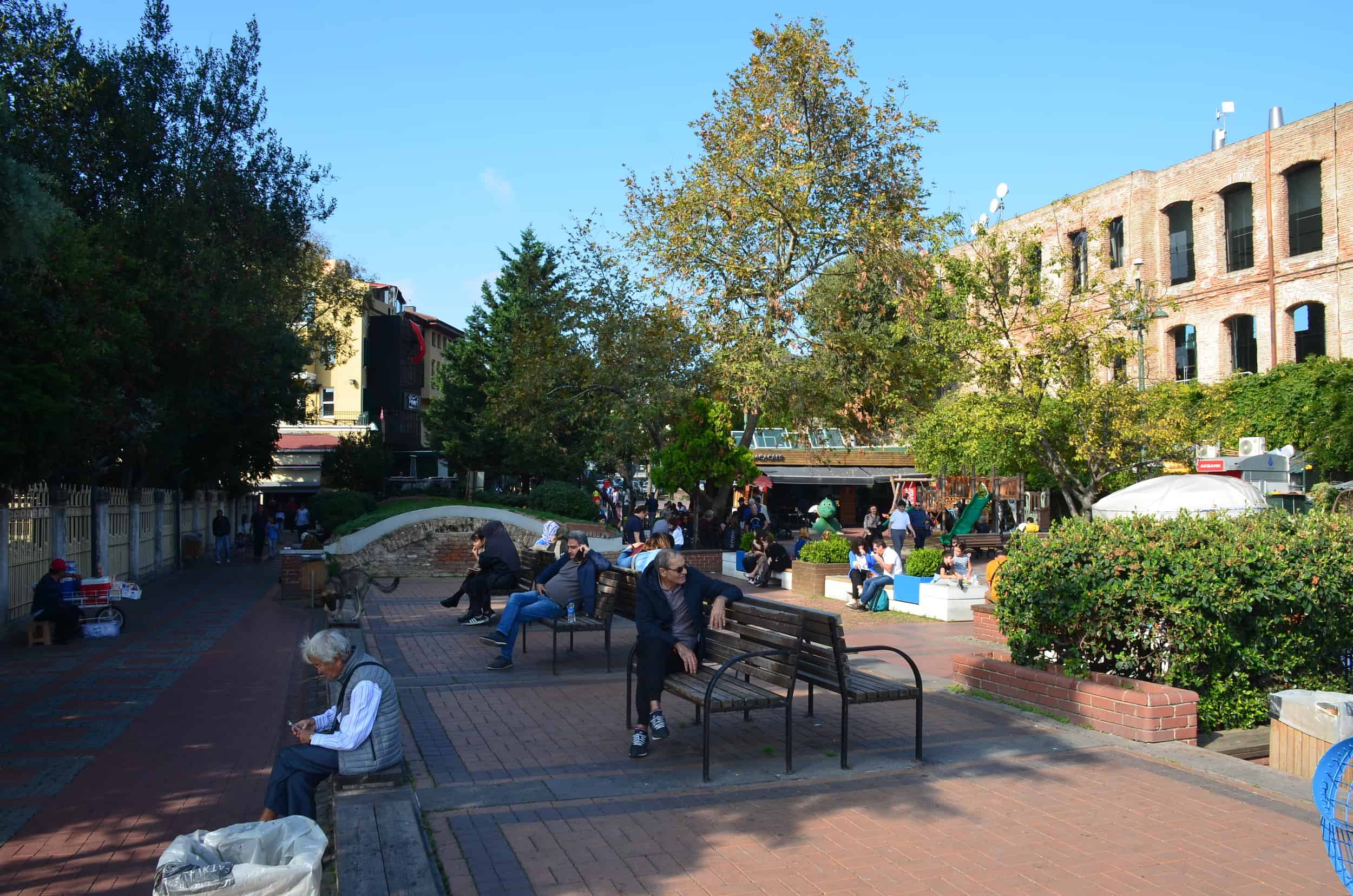
Esma Sultan Mansion
The shell of a large building nearby belongs to the Esma Sultan Mansion (Esma Sultan Yalısı). It was designed by Ottoman Armenian architect Sarkis Balyan (1835-1899) and completed in 1875. The mansion was presented to Esma Sultan (1873-1899), the daughter of Sultan Abdülaziz, as a wedding gift.
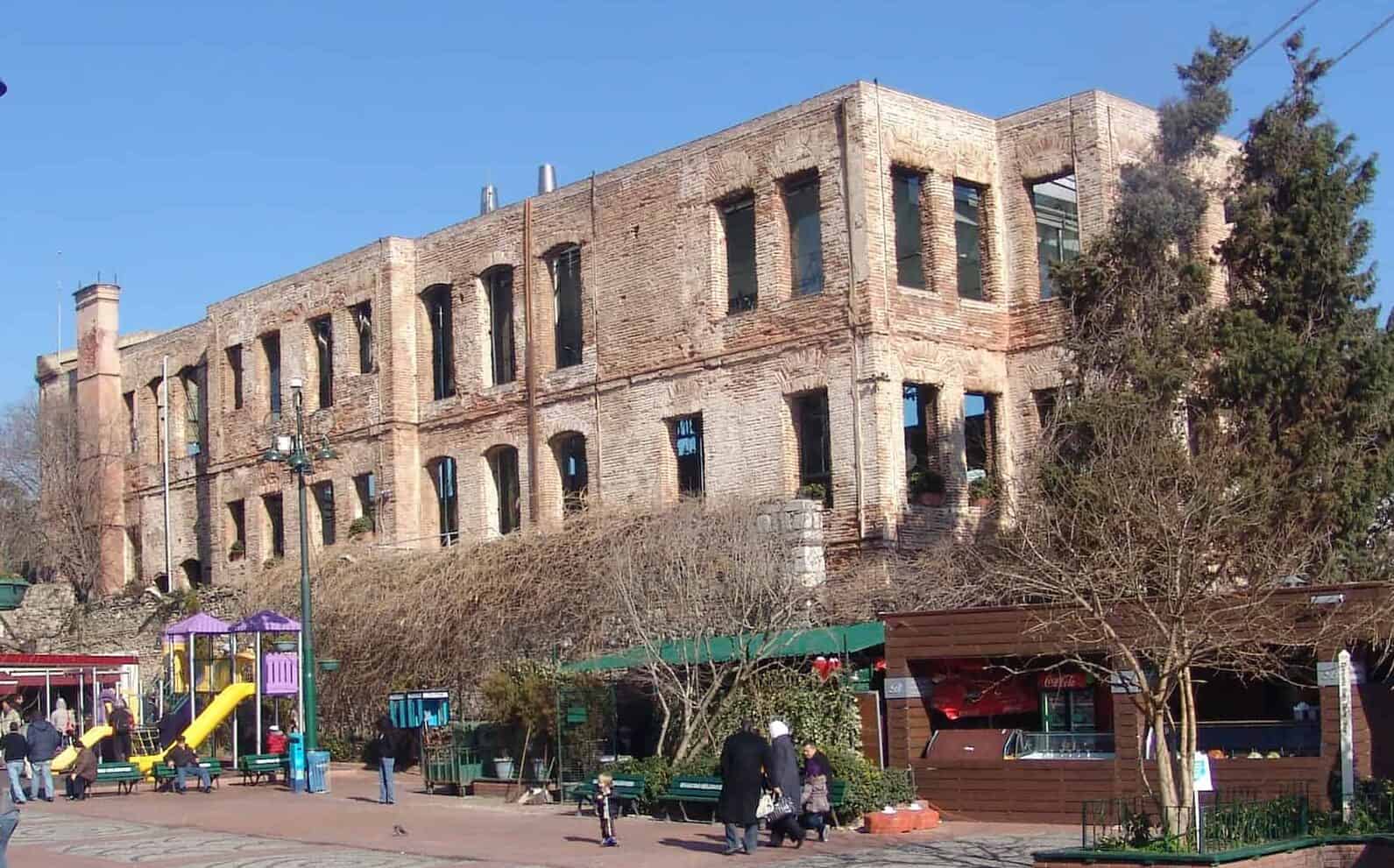
The mansion remained in the hands of the Ottoman dynasty until 1915, when it was converted to a tobacco warehouse. It served as a coal depot from 1920 to 1975 until it was destroyed by a fire. The Marmara Hotels chain purchased the ruins in the 1990s and redeveloped them as an event center. It hosts concerts, festivals, and large banquets.
Muallim Naci Avenue
Muallim Naci Avenue (Muallim Naci Caddesi) is the main road cutting through Ortaköy. It’s a small stretch of the road that takes many names as it runs up the length of the European side of the Bosporus. The road is named after Ottoman writer Muallim Naci (1850-1893).
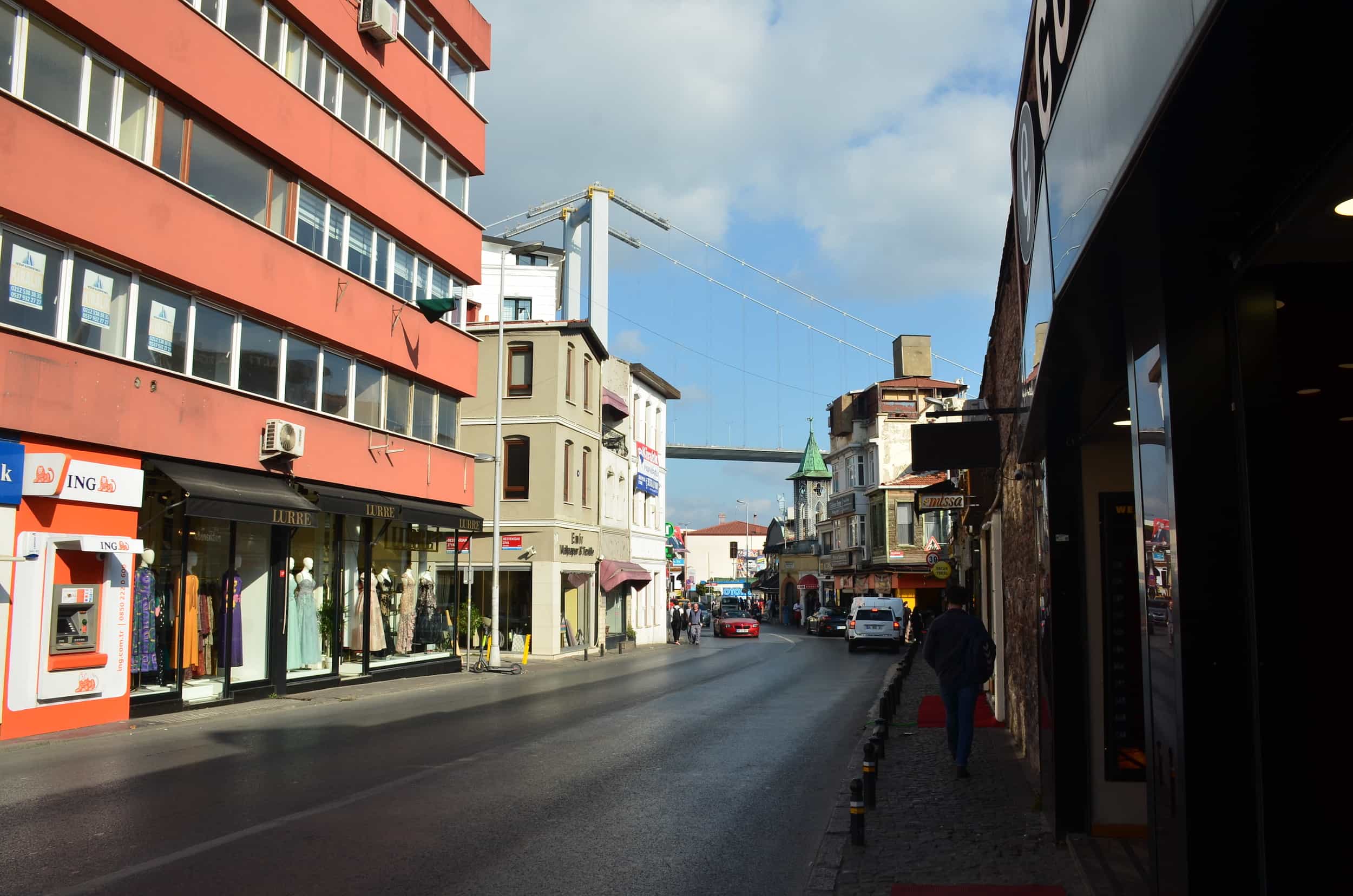
Muallim Naci Avenue passes a few important landmarks in Ortaköy. There are a handful of historic buildings as well.
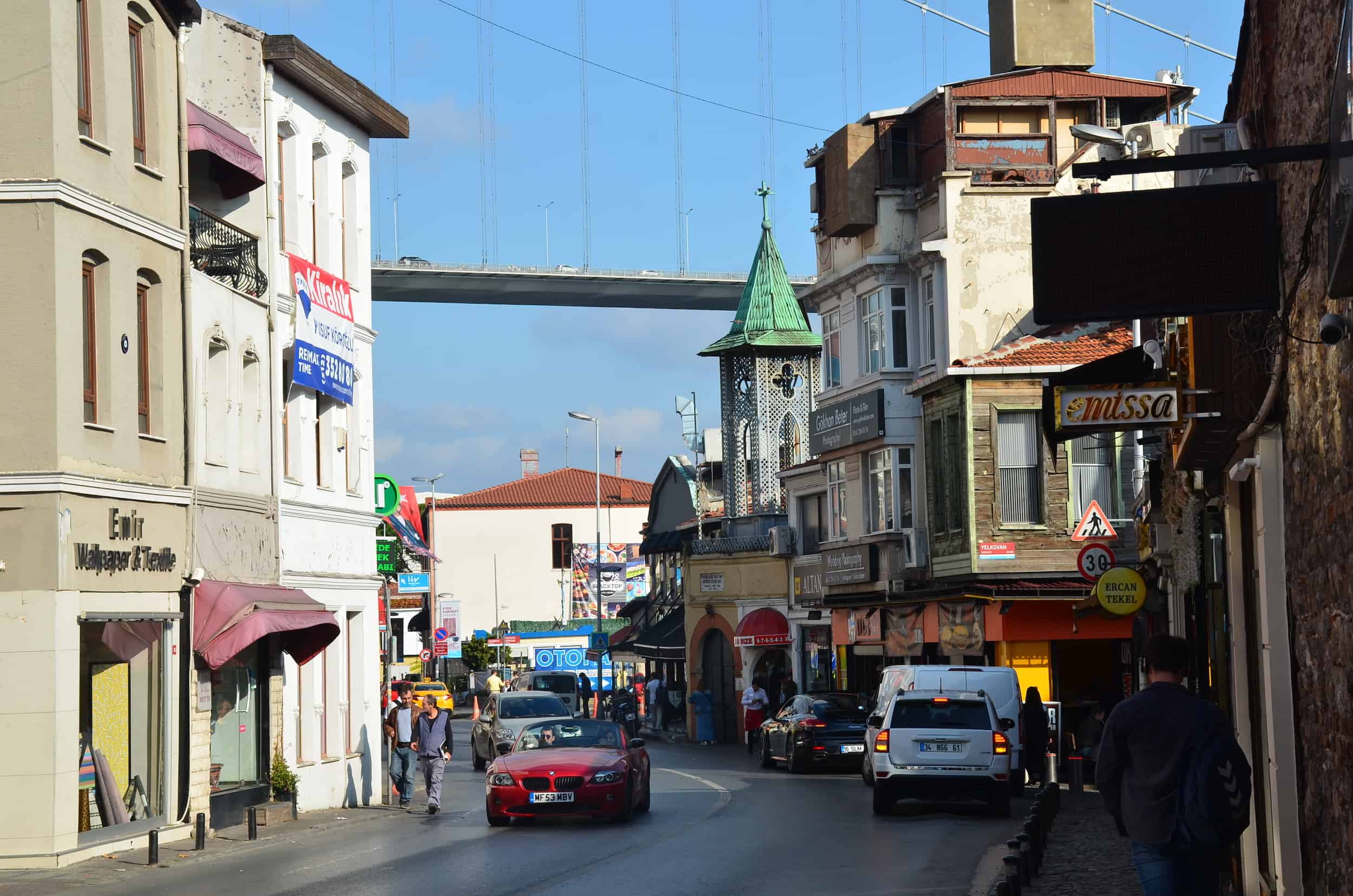
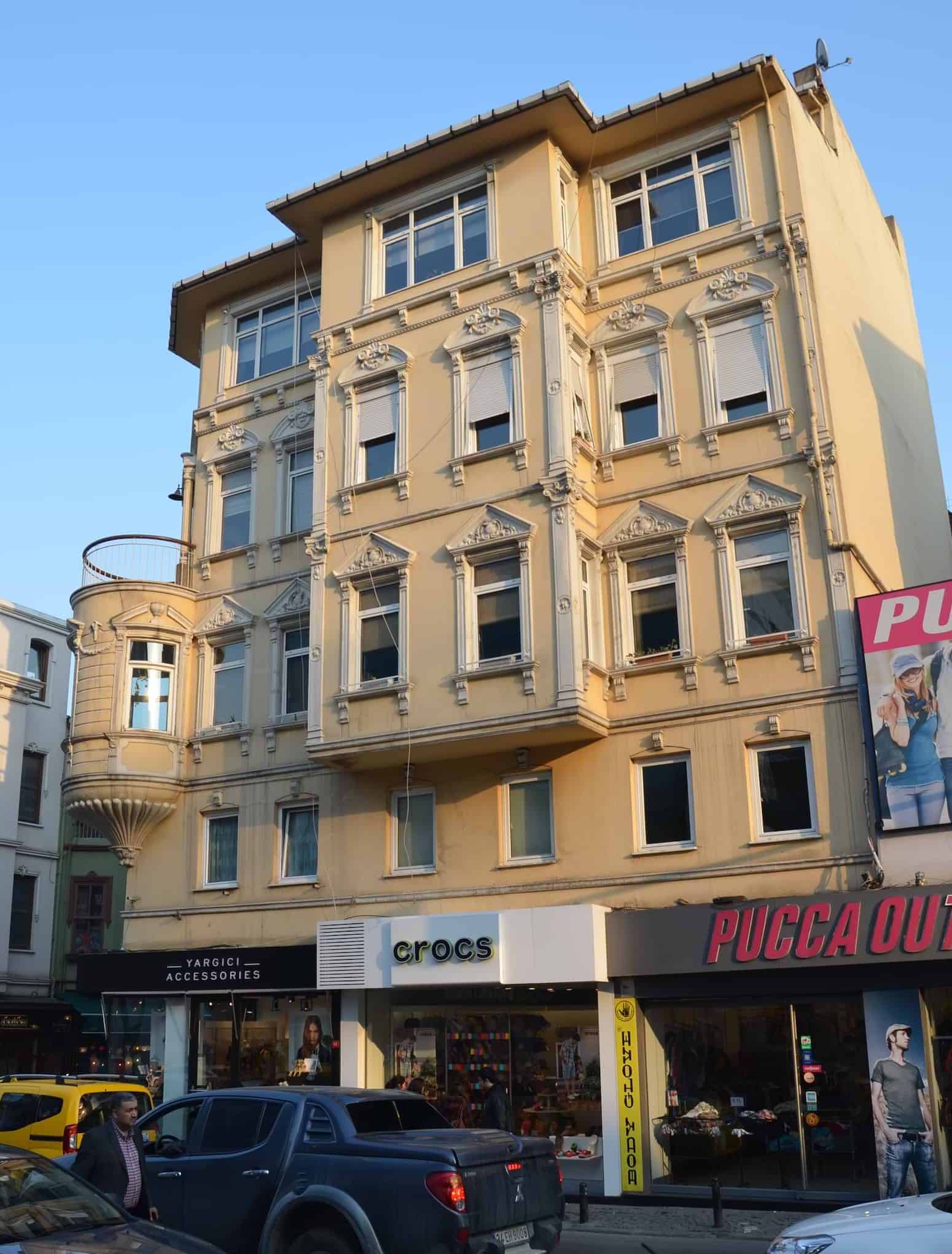
Etz Ahayim Synagogue
The first important landmark along Muallim Naci Avenue is the Etz Ahayim Synagogue (Etz Ahayim Sinagogu), also known as the Ortaköy Synagogue (Ortaköy Sinagogu). Its origins date back to the 14th century. The previous synagogue was built in 1813 and was destroyed by fire in 1941. Only the marble Torah ark survived, and the synagogue was rebuilt. Visits can be arranged by contacting the Chief Rabbinate of Turkey.
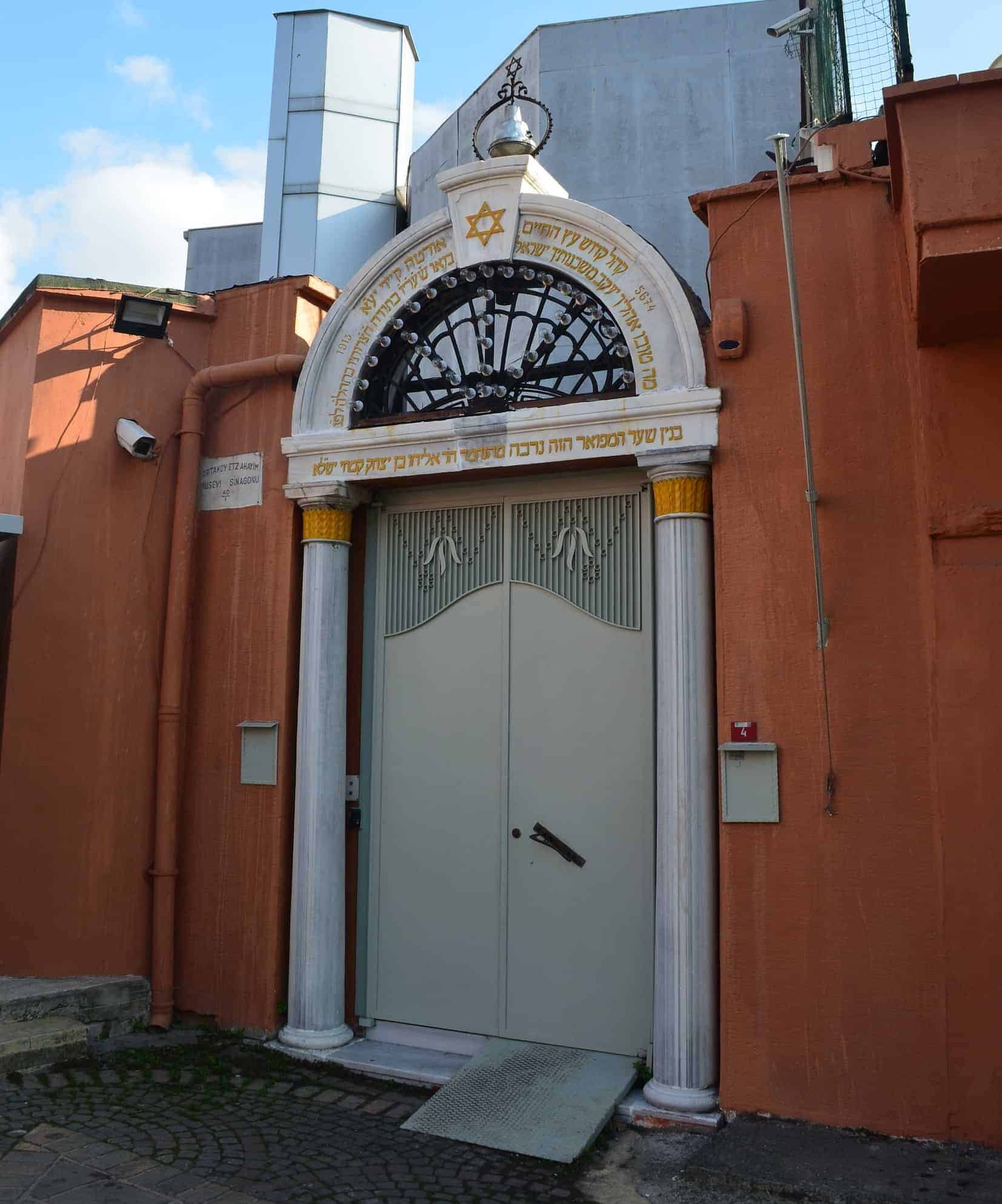
Saint Phocas Church
Next is the Saint Phocas Greek Orthodox Church (Ἅγιος Φωκᾶς Μεσαχώρου / Ayios Fokas Rum Ortodoks Kilisesi). A monastery dedicated to St. Phocas, the Bishop of Sinope (now Sinop) under Roman Emperor Trajan, was first built in the area in the 7th century. It was demolished before the Fall of Constantinople in 1453 to make way for Rumeli Fortress.
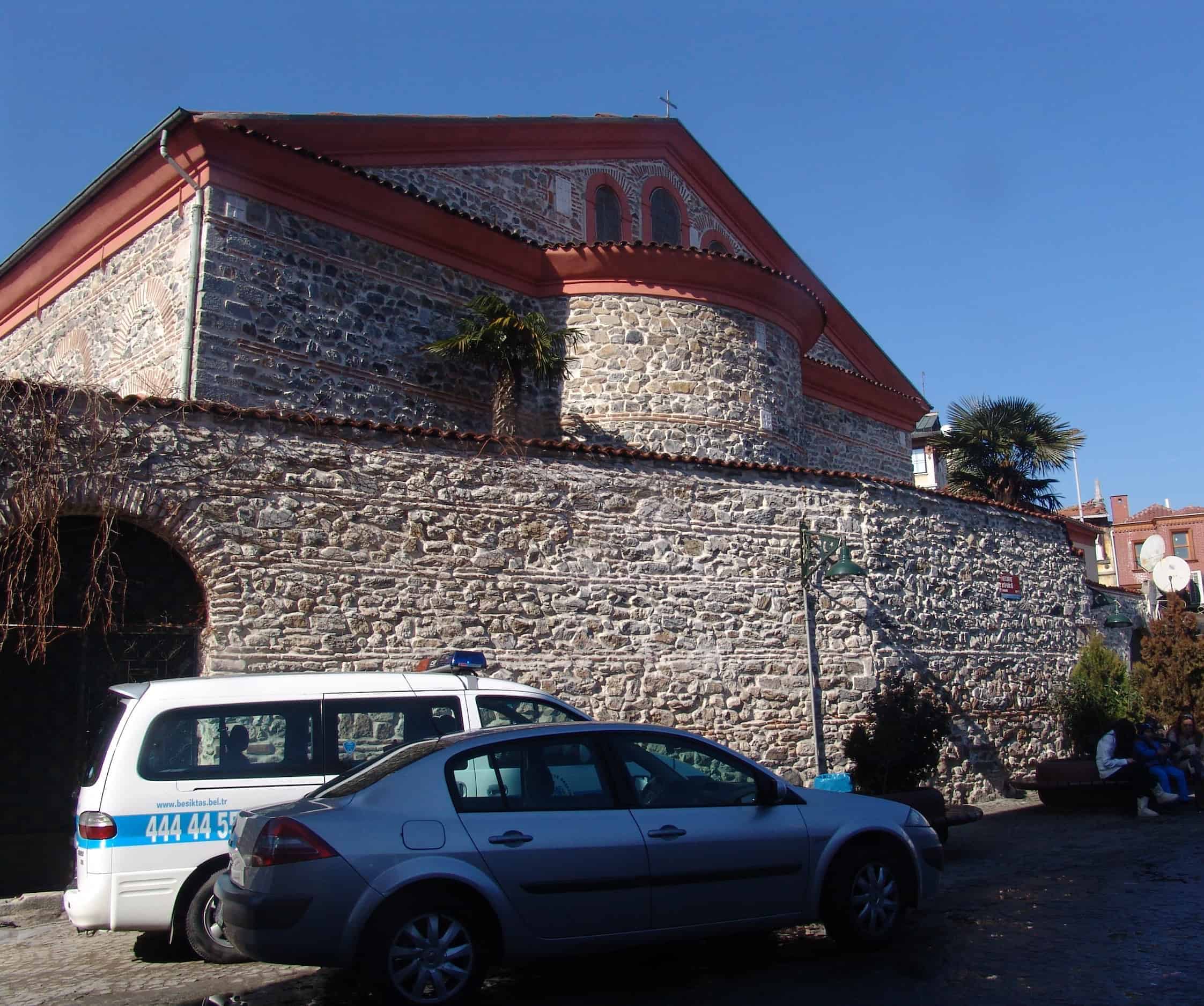
A small church was built on the site in 1560 and enlarged in 1693. It burned down in 1719 and was replaced with a small wooden chapel built in 1720. The chapel was replaced with another similar building in 1819, and the current church was built in 1856.

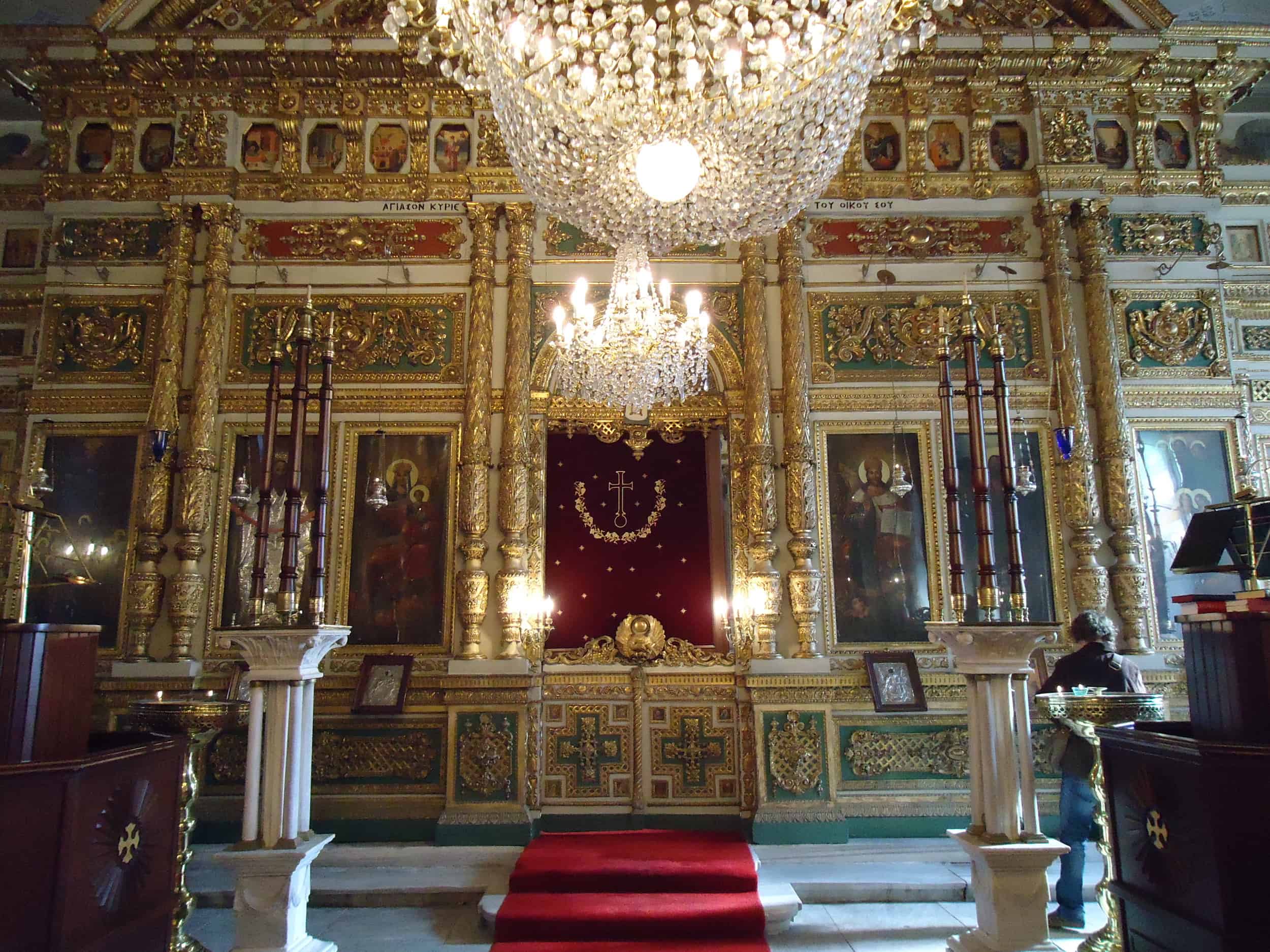
The congregation of the church was made up of mostly poor farmers, fishermen, market workers, and boatmen, which is in sharp contrast to the wealth of Ortaköy today. A holy spring used to exist in an underground chamber near the Etz Ahayim Synagogue, but it’s now sealed.
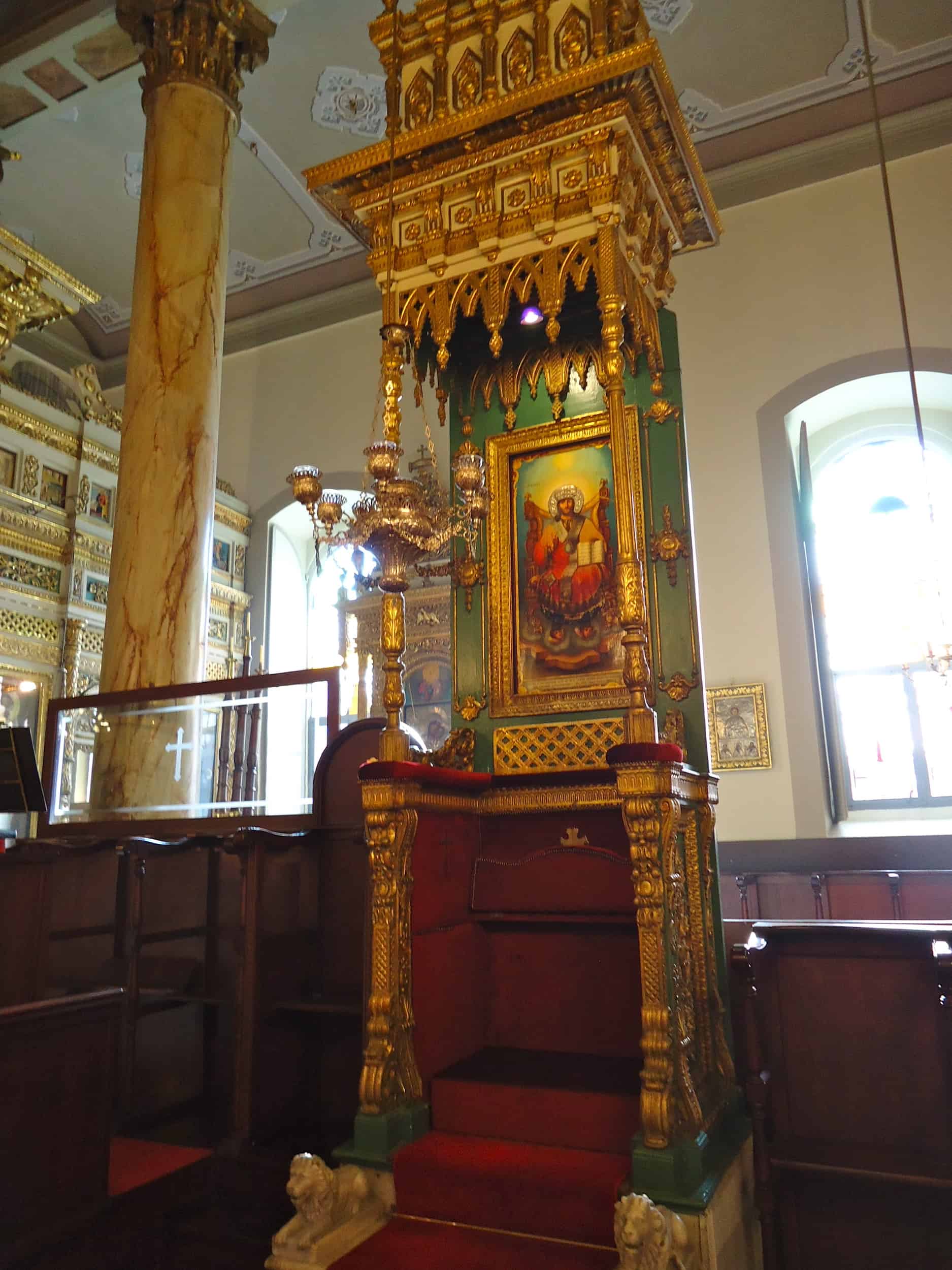
Hüsrev Kethüda Hamam
Across the street is the Hüsrev Kethüda Hamam (Hüsrev Kethüda Hamamı). It was built in 1550 by Hüsrev Kethüda, the steward of Grand Vizier Kara Ahmed Pasha (d. 1555). The bath was designed by Ottoman architect Mimar Sinan (1490-1588) and functioned until the mid 1980s.

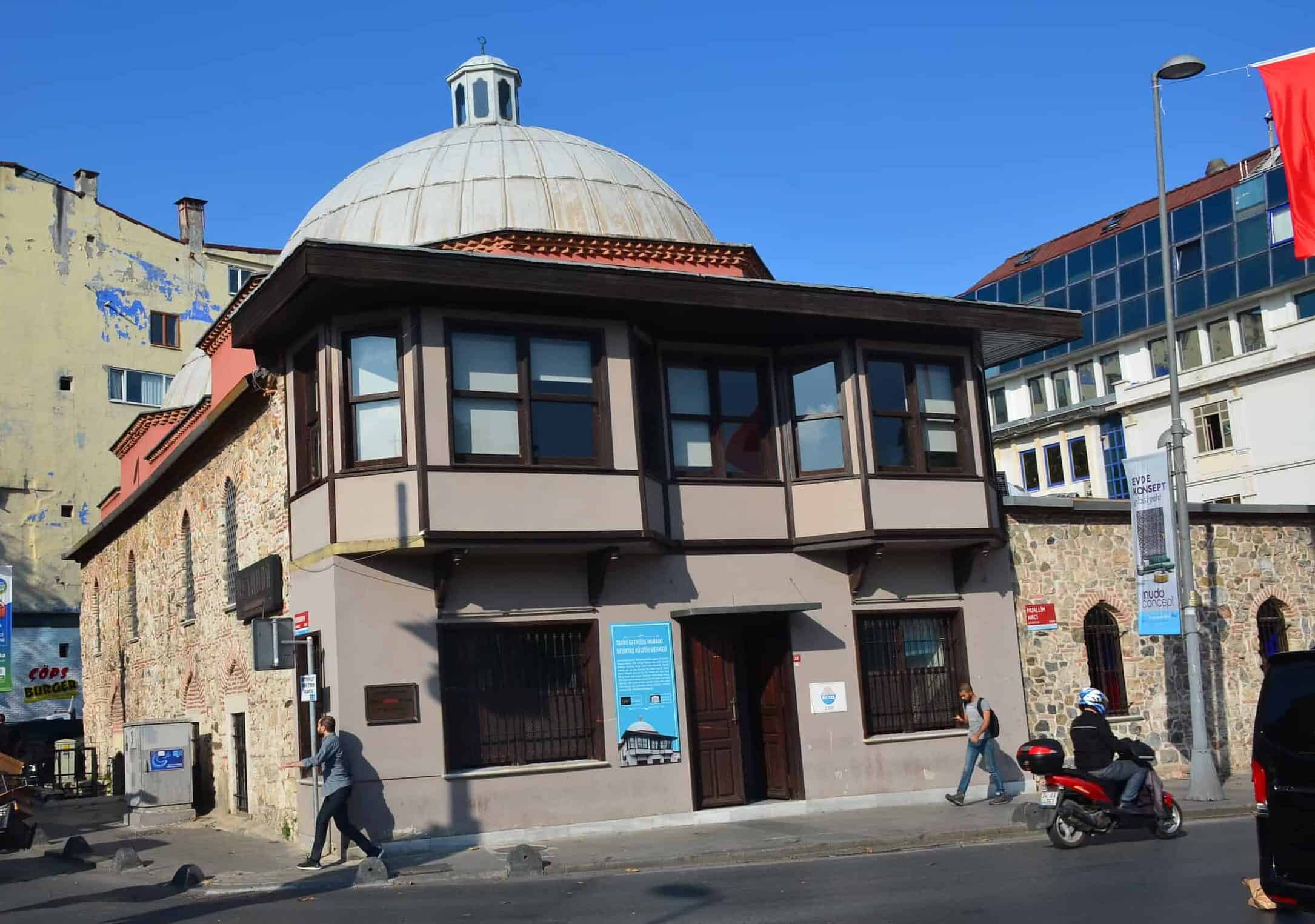
The building was restored between 2001 and 2011 and now functions as the Historic Hüsrev Kethüda Hamam Beşiktaş Cultural Center (Tarihi Hüsrev Kethüda Hamamı Beşiktaş Kültür Merkezi). It’s typically open daily from 10am to 6pm and admission is free (as of January 2024).
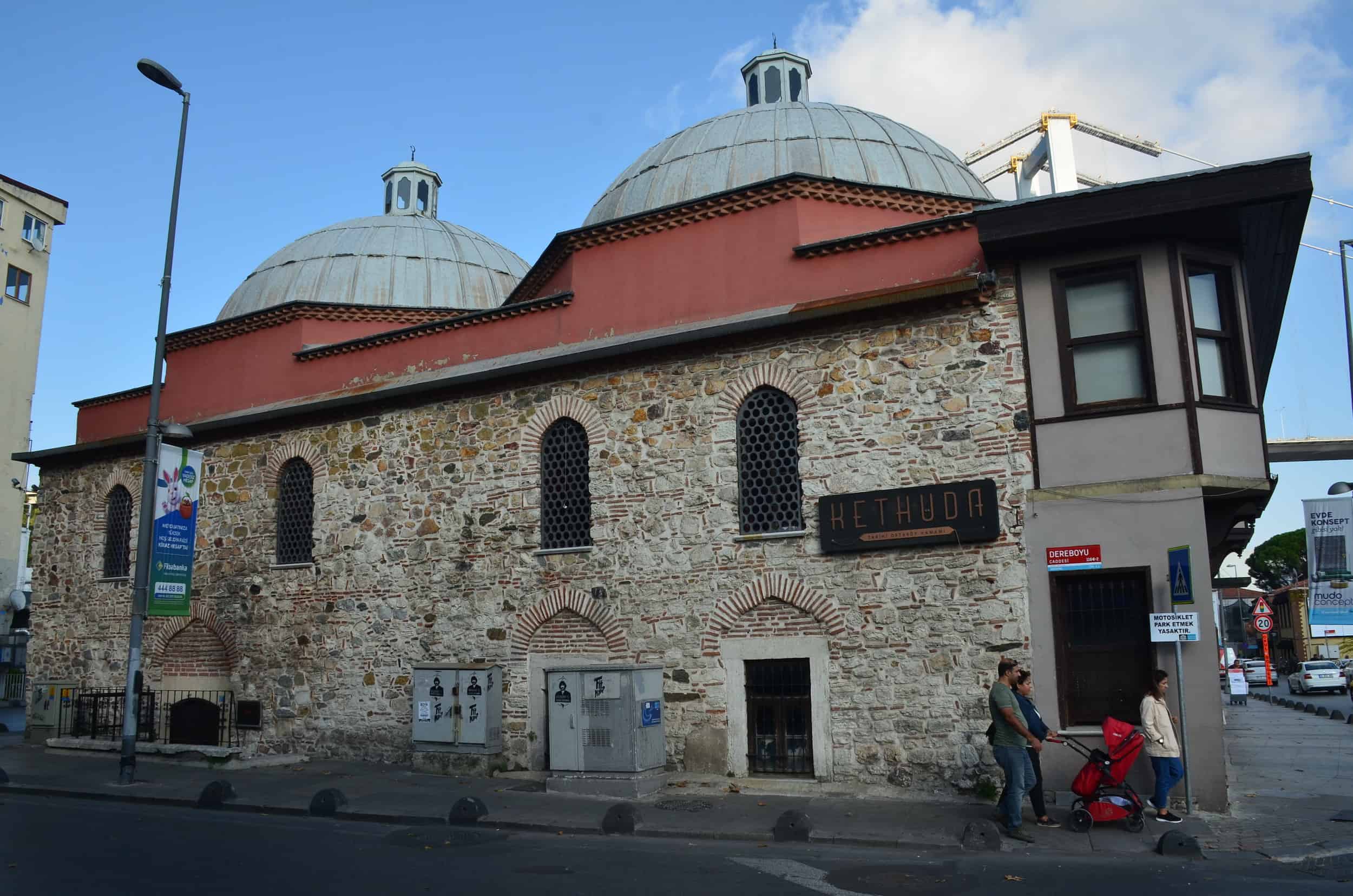

When we visited, there was an art exhibition featuring some impressive paintings of Istanbul. Many of the original features of the bath were intact, such as marble washbasins and floors.
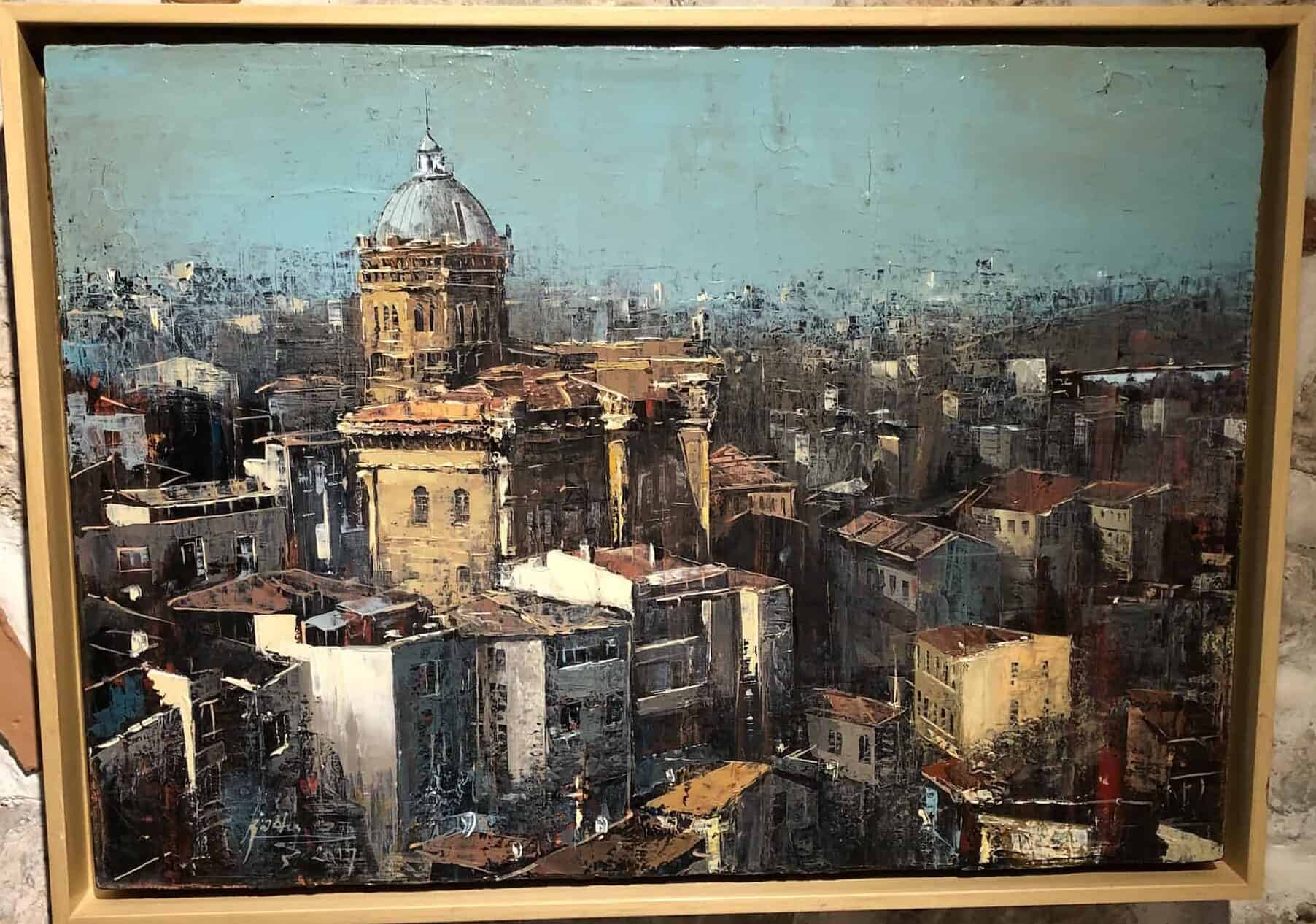
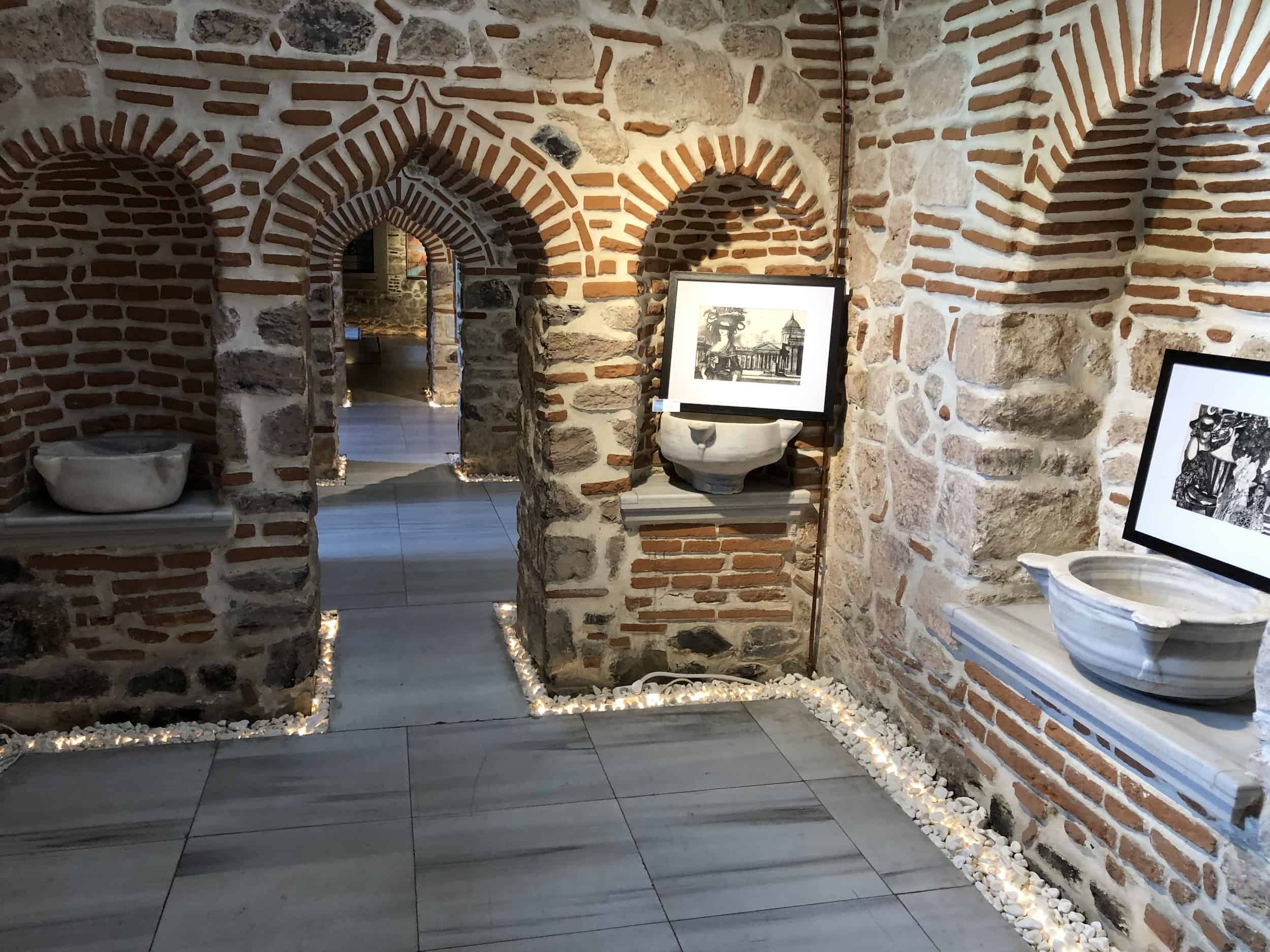
Just inside the entrance, we were able to admire the reconstructed wooden balcony around the underside of the dome.
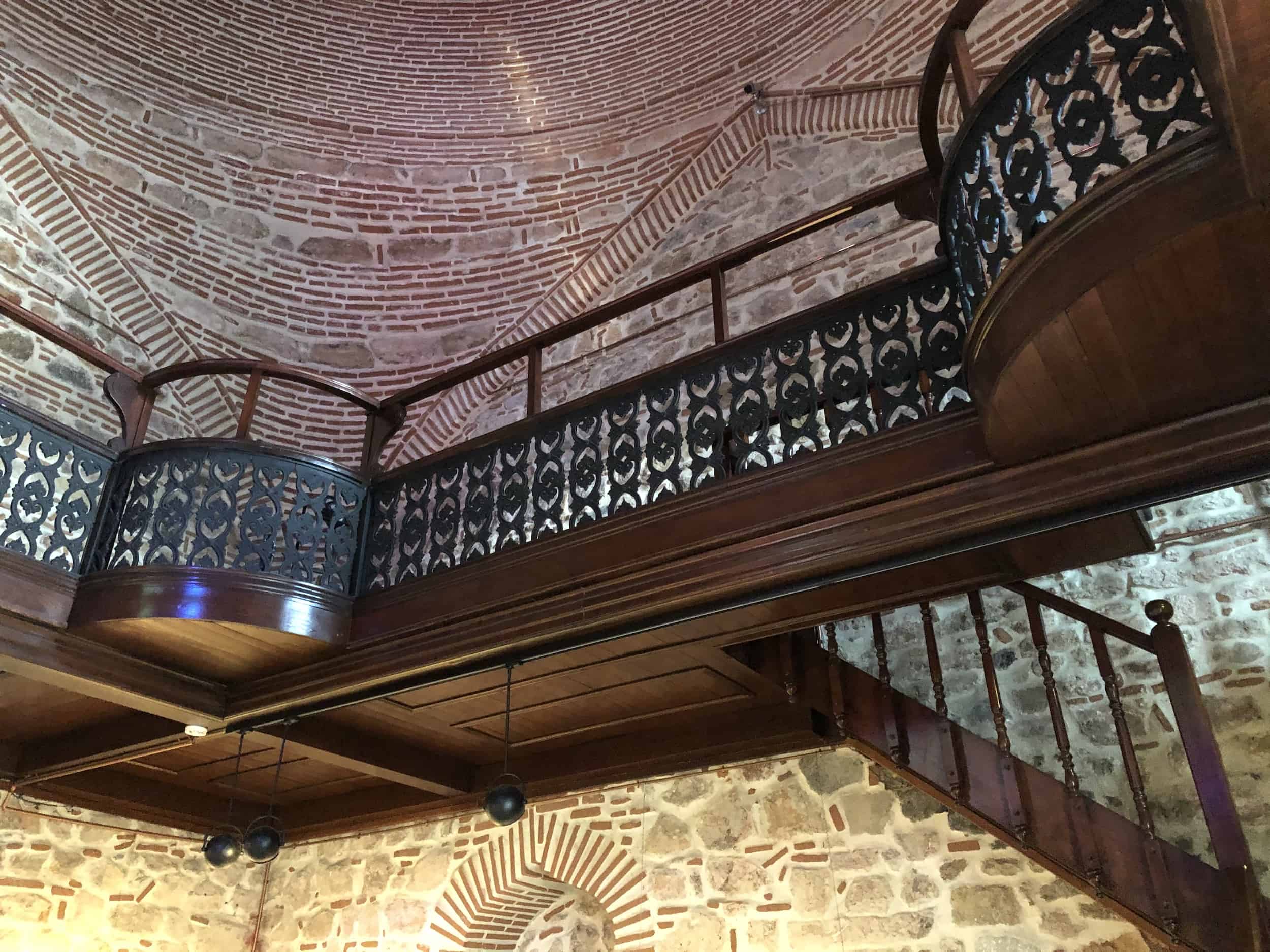
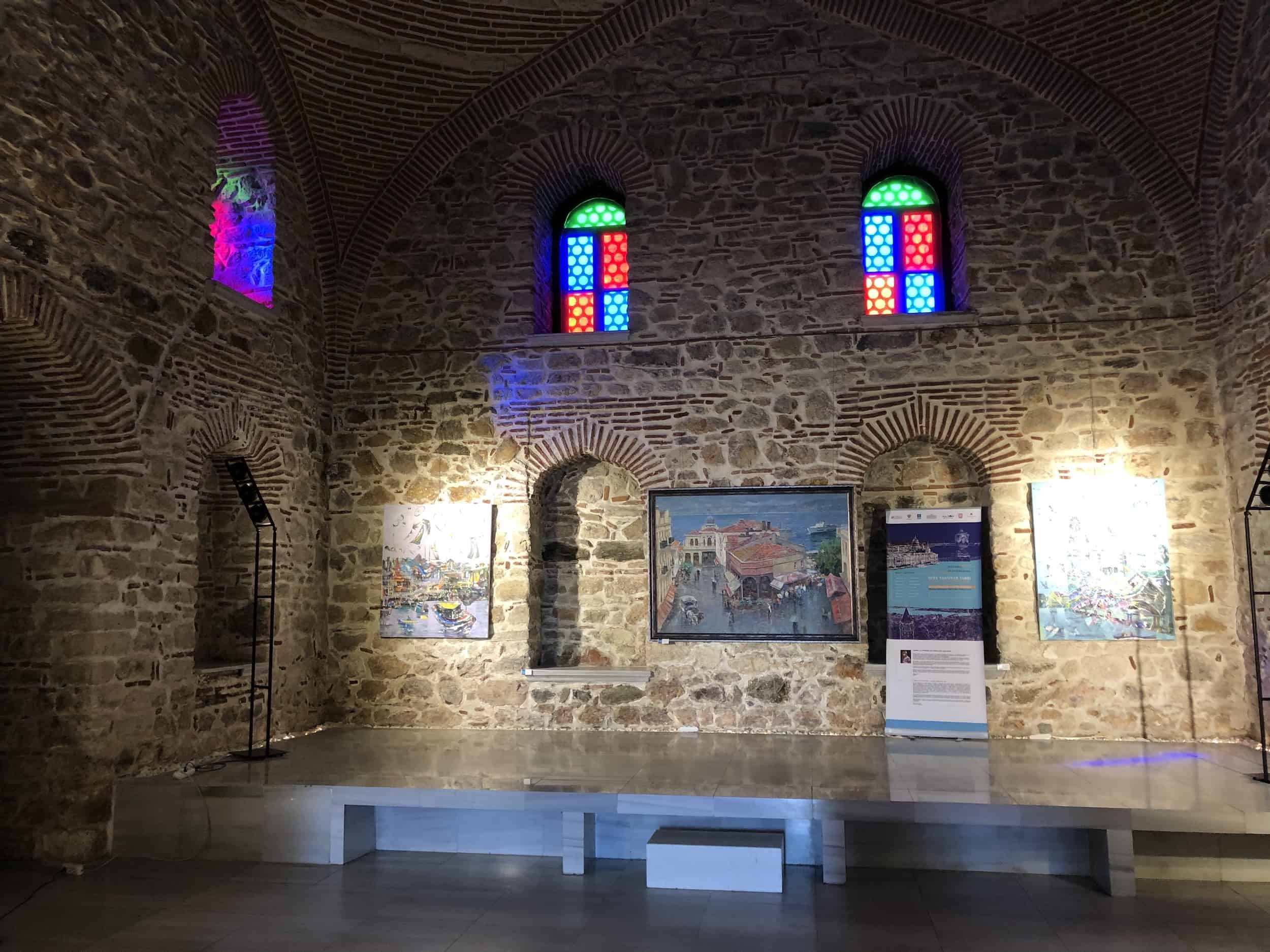
Exploring the Streets of Ortaköy
Between Ortaköy Square and Muallim Naci Avenue, you’ll find a maze of streets and alleys to wander through. There are plenty of shops, cafés, bars, and restaurants.
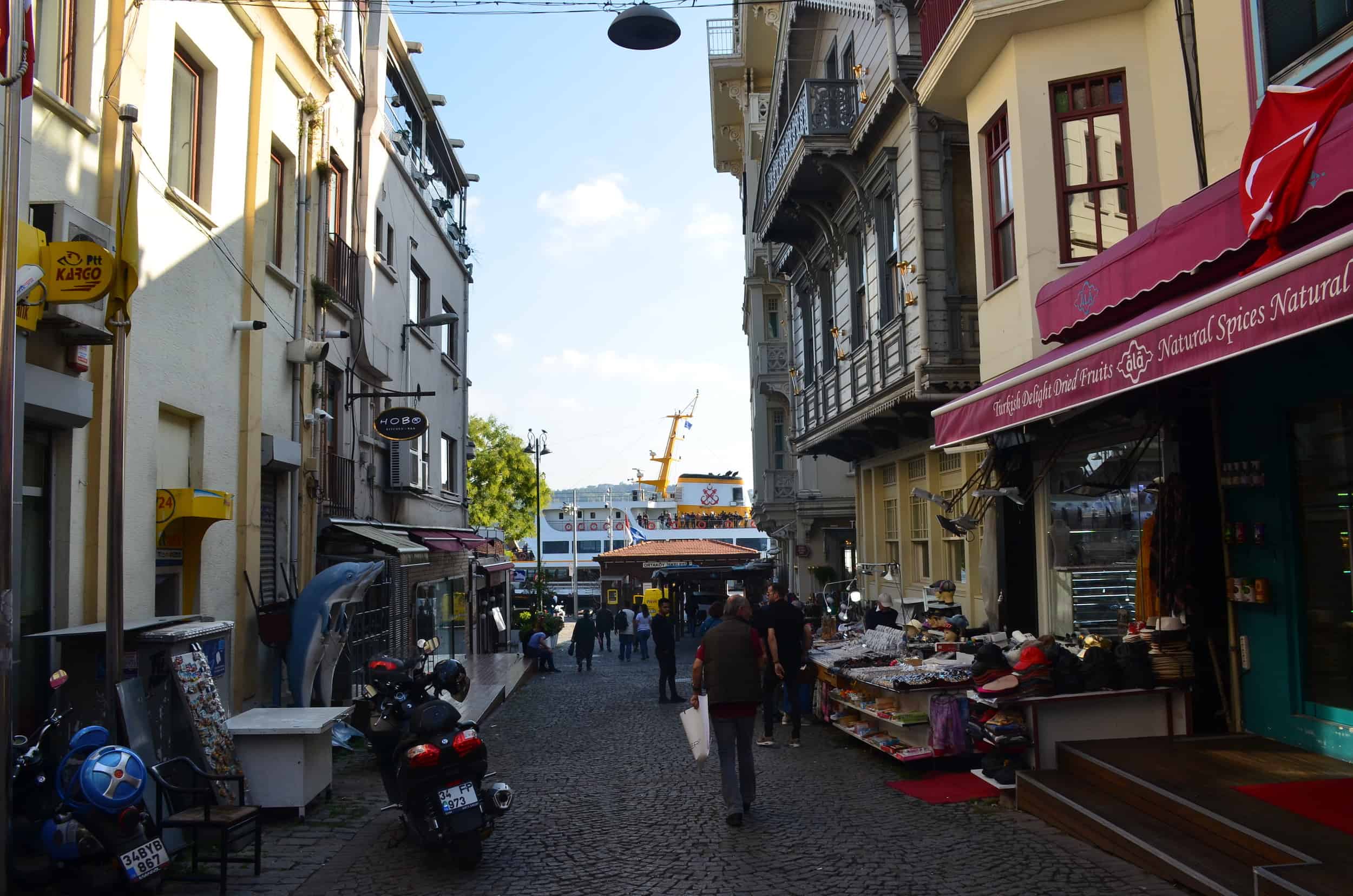
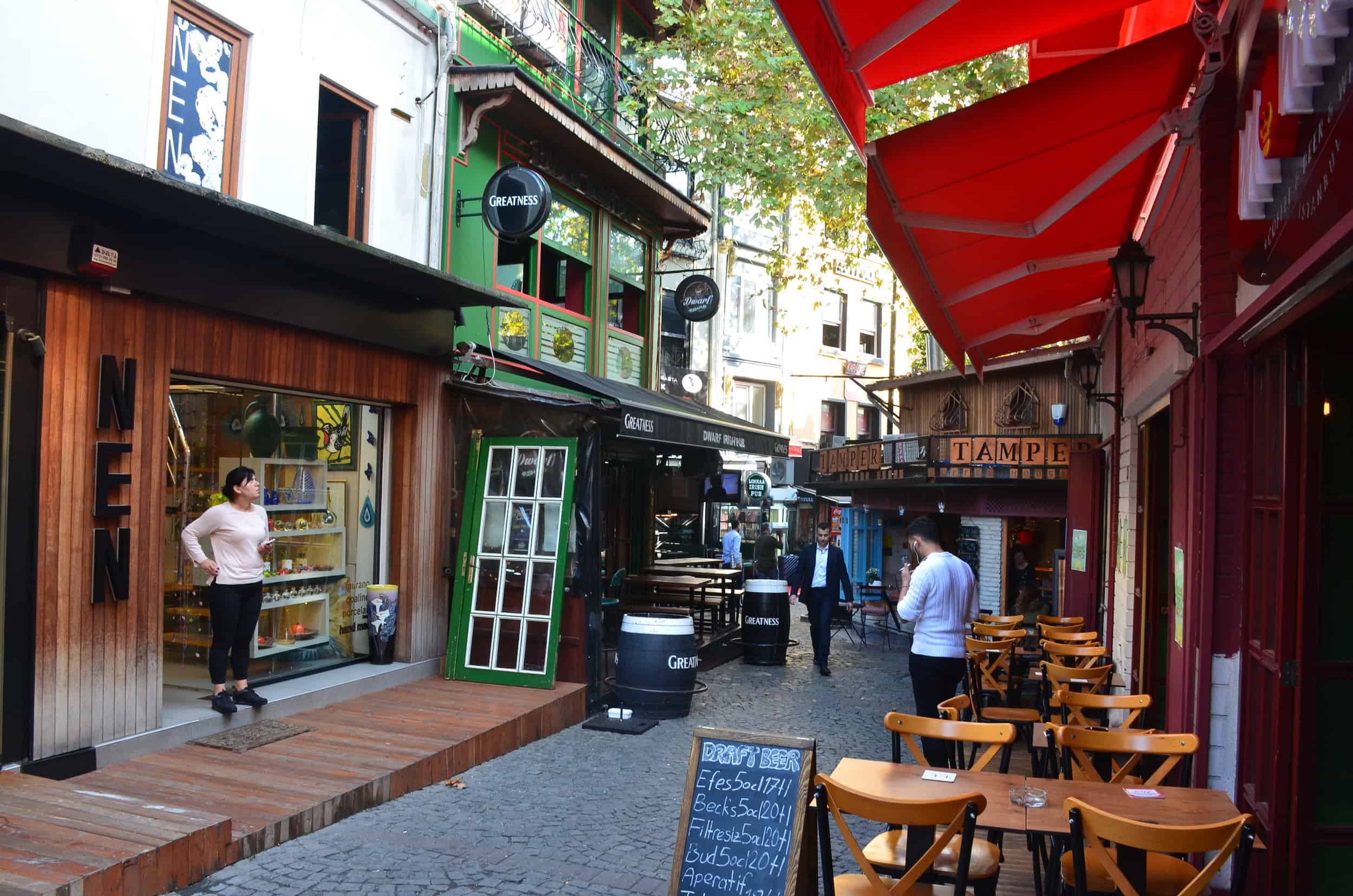
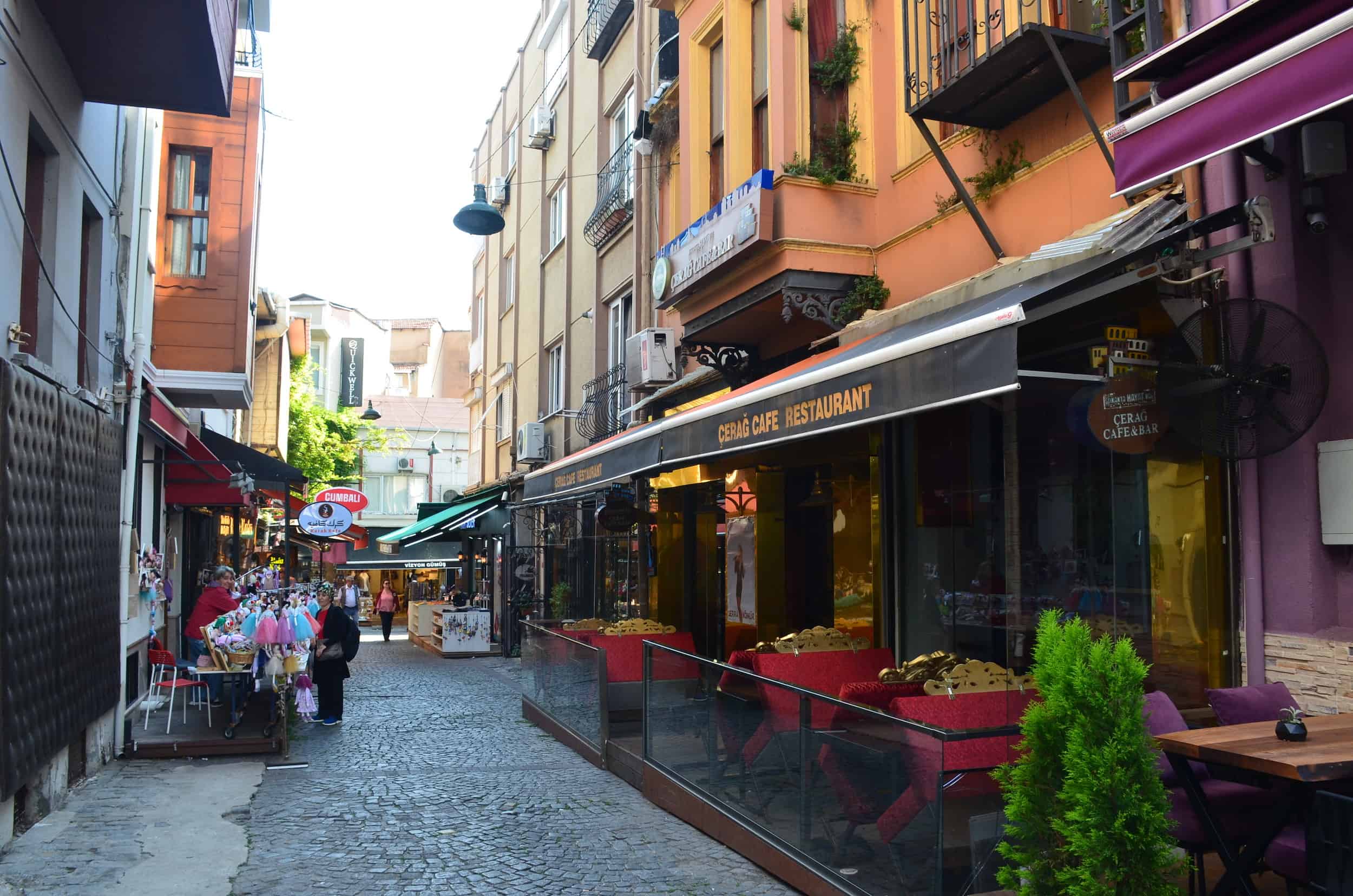
Some of the buildings in the area are historic Ottoman buildings with bay windows and beautiful designs.

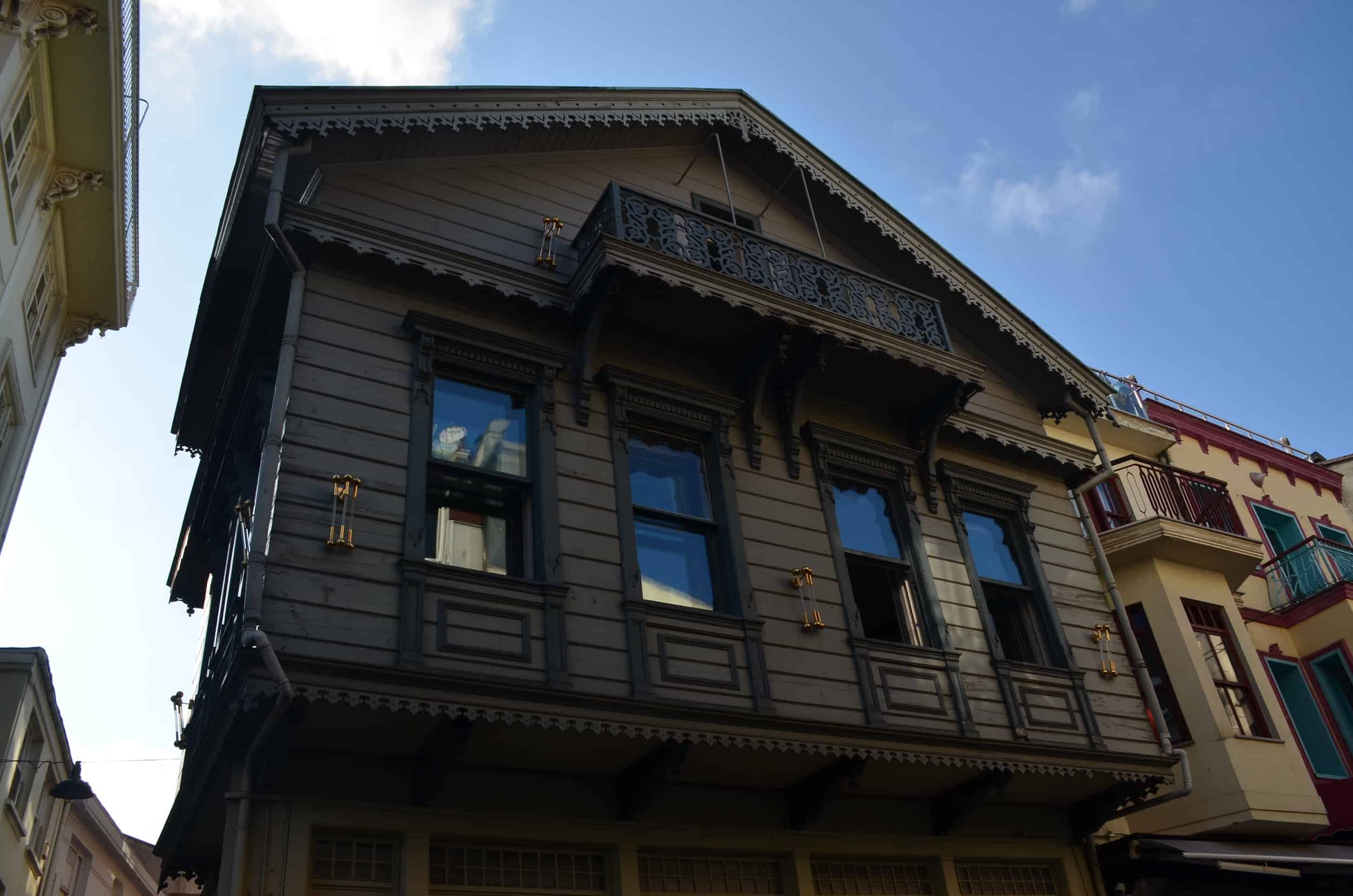
Bosporus Bridge
Ortaköy sits in the shadow of the Bosporus Bridge (Boğaziçi Köprüsü), officially the July 15th Martyrs’ Bridge (15 Temmuz Şehitler Köprüsü). It was the first bridge built over the Bosporus, extending between Ortaköy on the European side and Beylerbeyi on the Asian side. An interpretive panel just underneath the bridge along Muallim Naci Avenue explains its history.

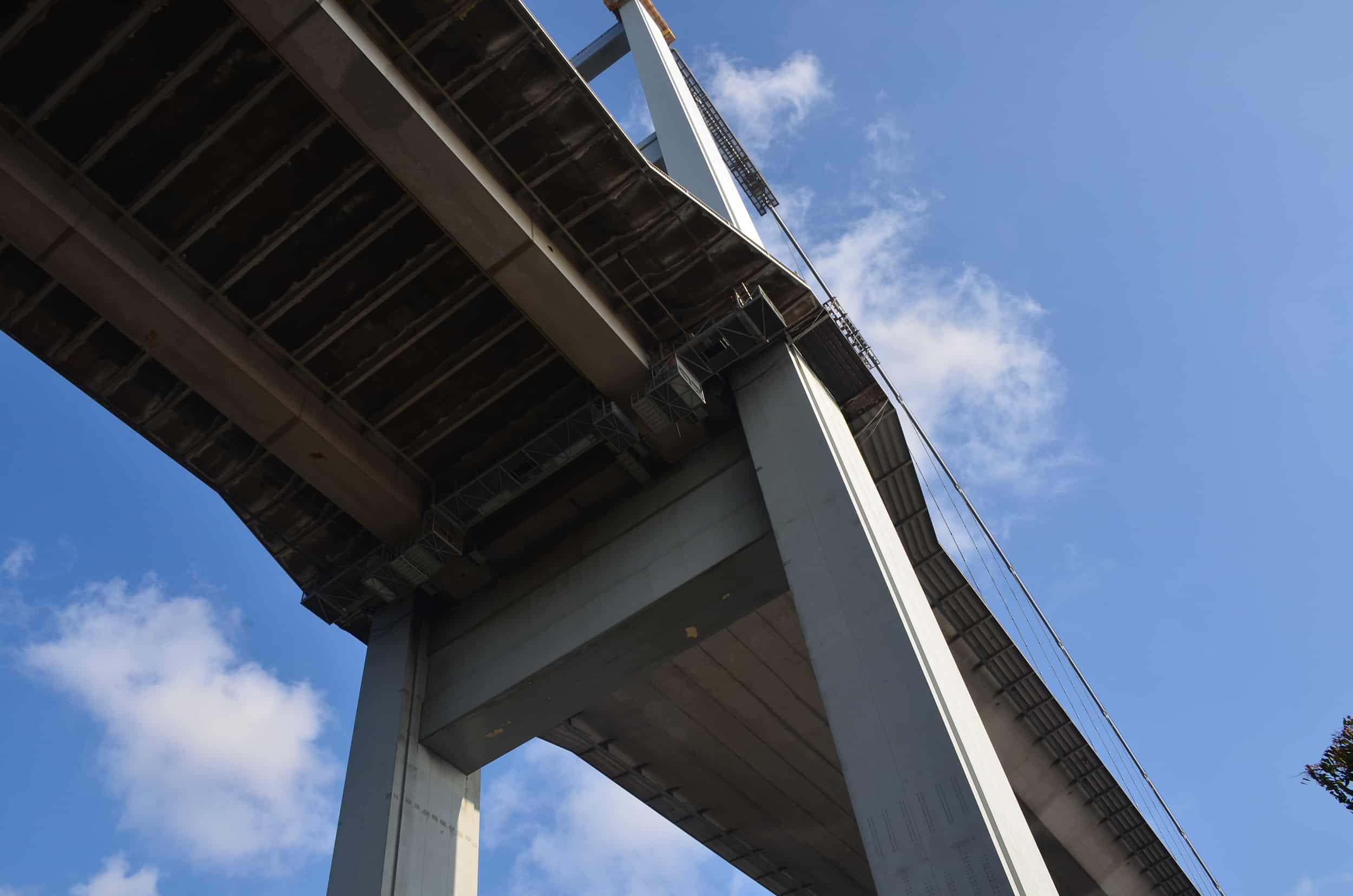
History of the Bosporus Bridge
The idea for a bridge over the Bosporus dates back to antiquity. It didn’t become reality until Turkish Prime Minister Adnan Menderes (1899-1961) signed off on the project in 1957. The bridge was designed by British engineering firm Freeman Fox and Partners in 1968.
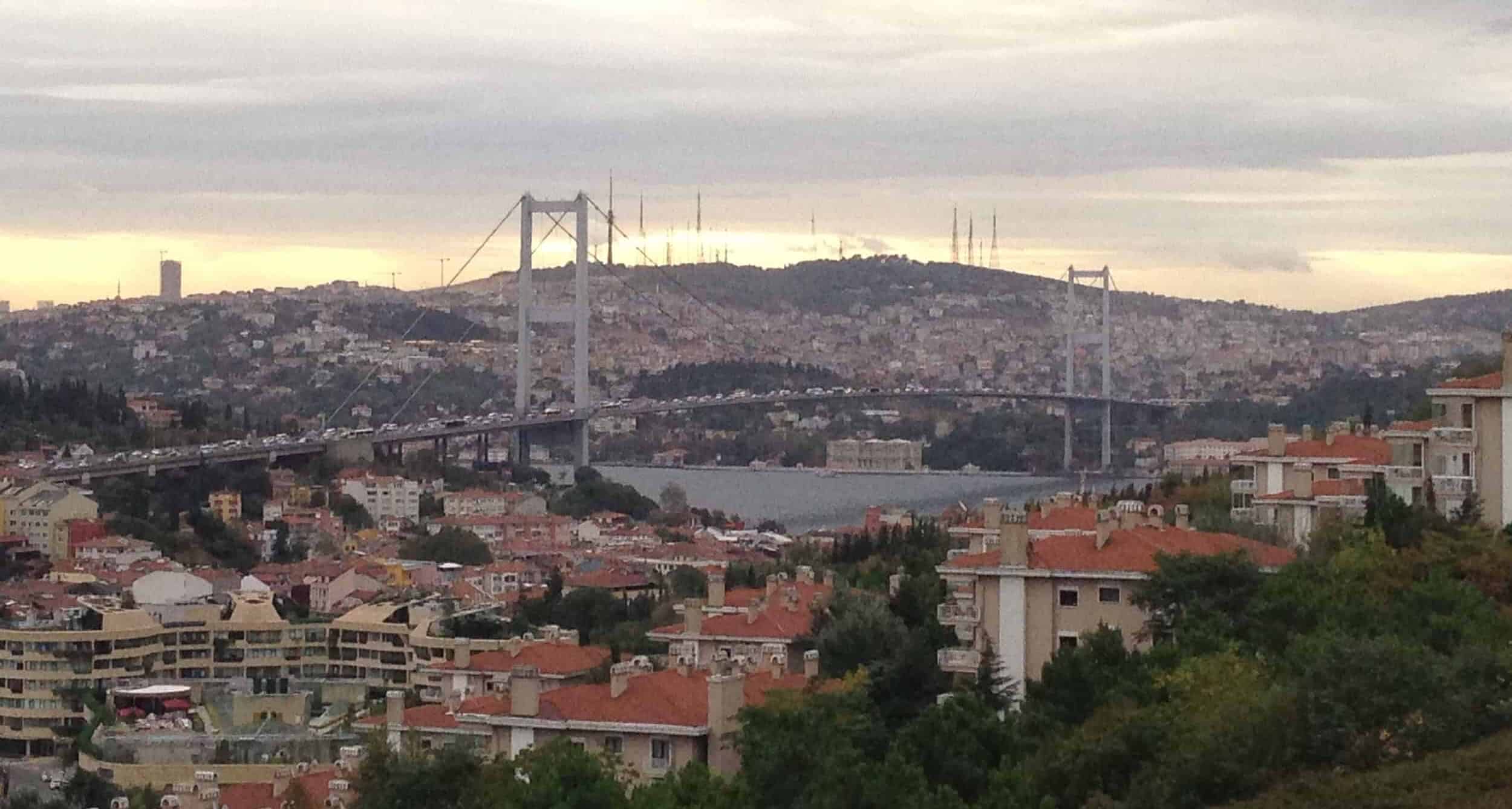
Officially renamed the 15 July Martyrs Bridge (15 Temmuz Şehitler Köprüsü), it was built between 1970 and 1973. It was the fourth longest suspension bridge in the world upon its completion. The bridge opened to the public on October 30, 1973. Pedestrians were allowed to use the bridge until 1978. The Istanbul Marathon crosses the bridge annually in November.
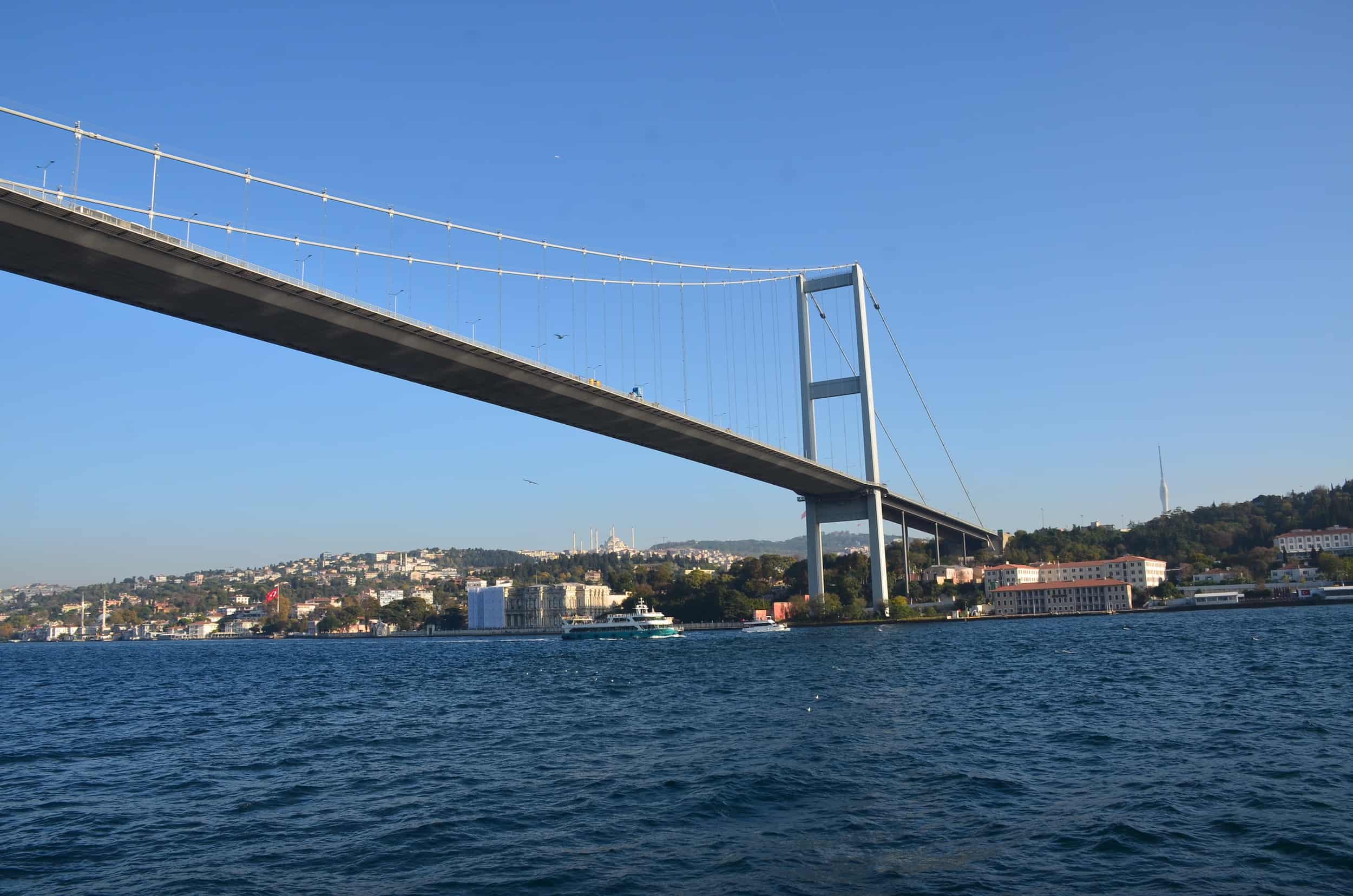
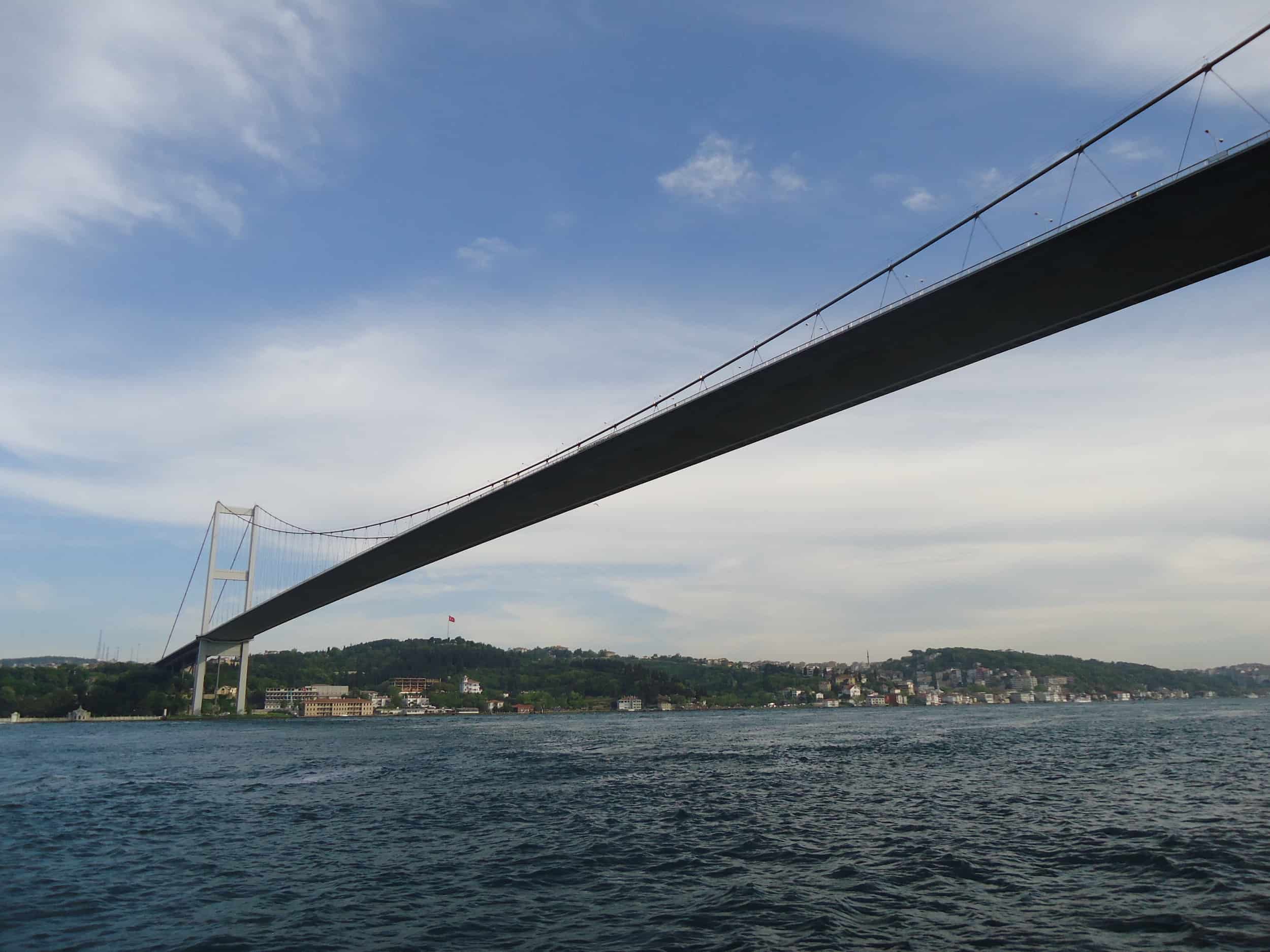
Specs of the Bosporus Bridge
The Bosporus Bridge is 1,560 meters (5,118 feet) long, 33.40 meters (110 feet) wide, and 165 meters (541 feet) high. It has a clearance of 64 meters (210 feet).
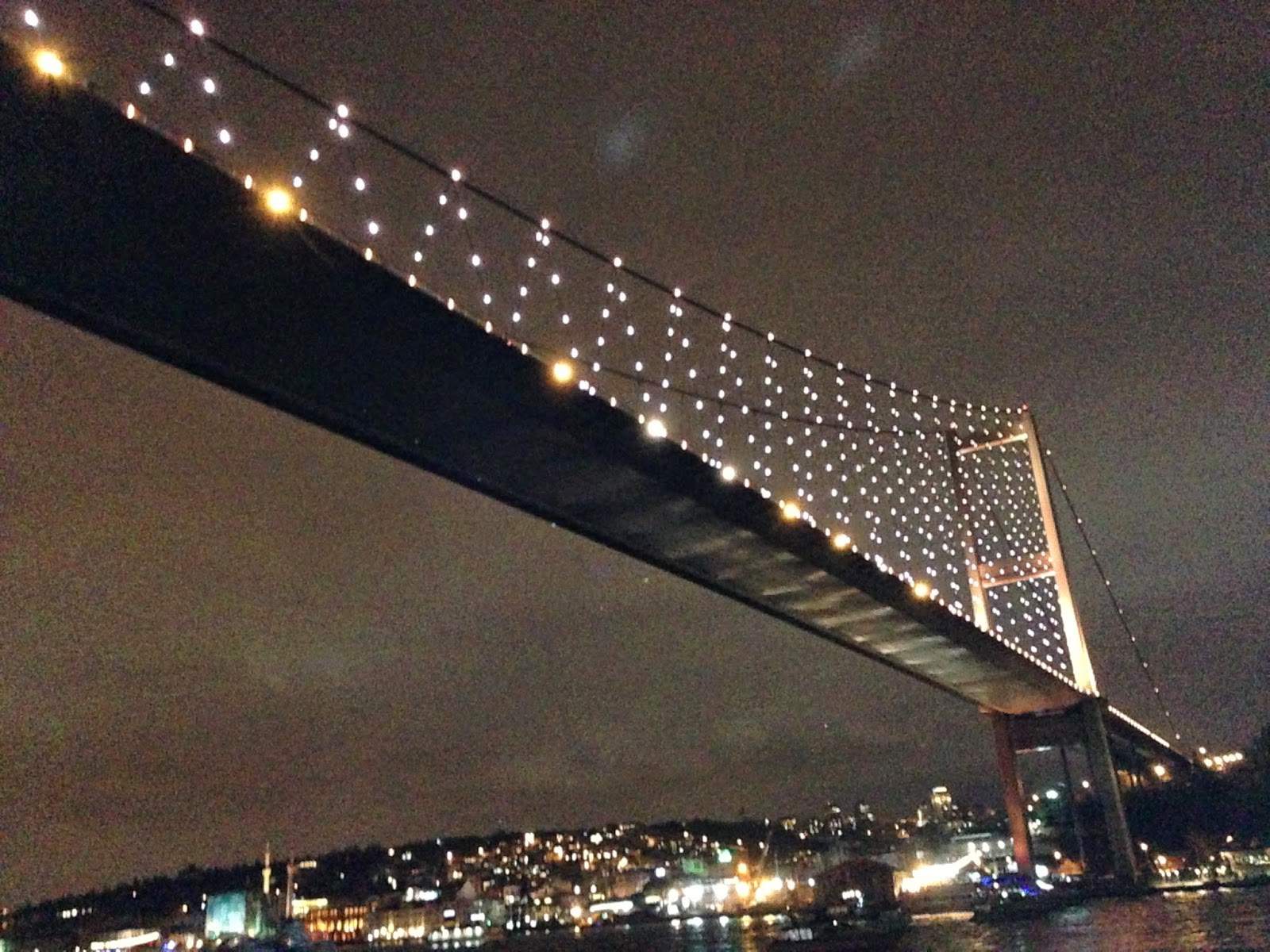
There are eight lanes of traffic. Each side has three standard lanes and one emergency lane. On weekday mornings, four of the six lanes run westbound and only two eastbound. On weekday evenings, four lanes run eastbound two run westbound. No commercial trucks are allowed to use the bridge.
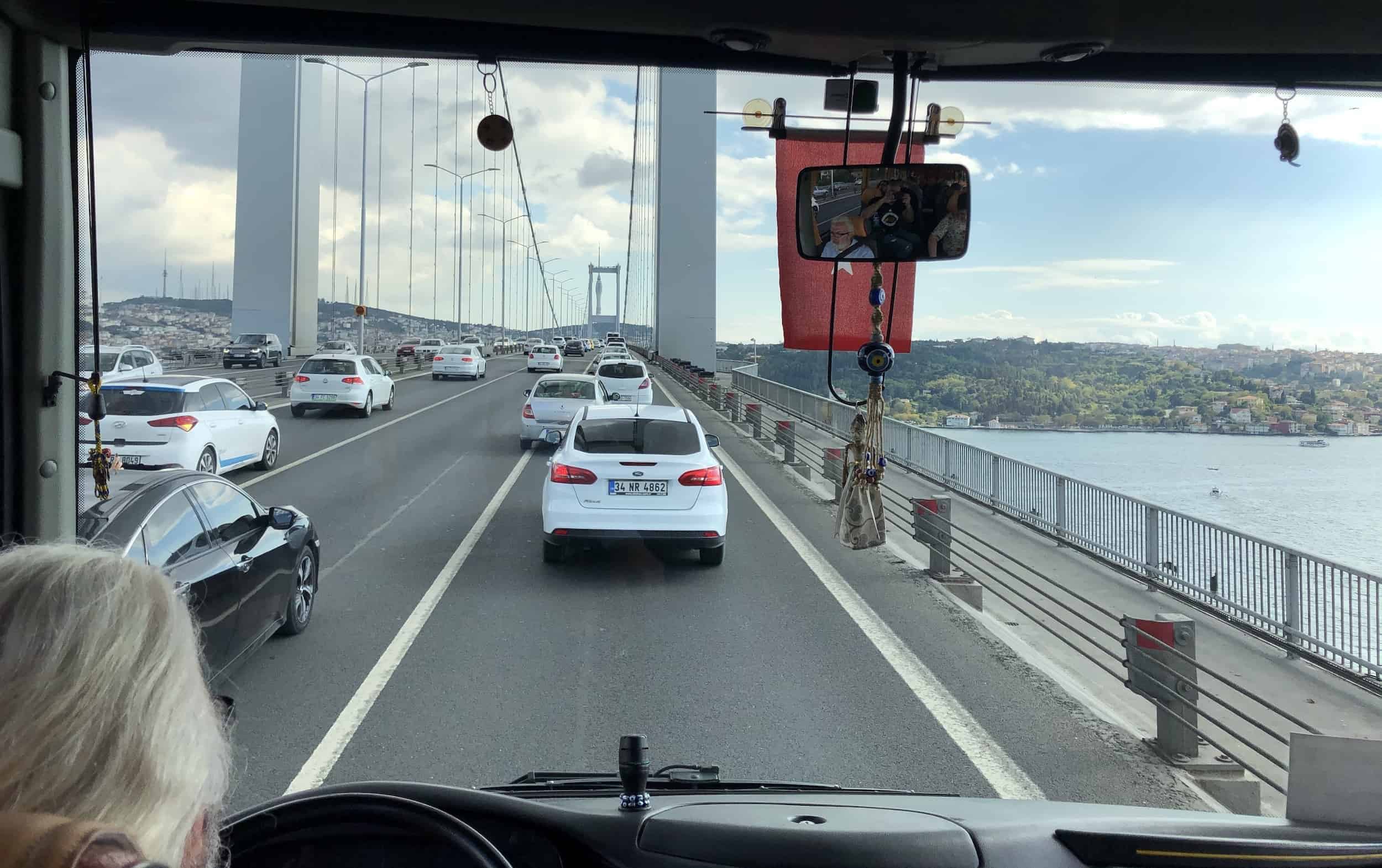
There’s also a toll plaza with 13 booths. Cars crossing from Europe to Asia pay a toll while cars crossing from Asia to Europe pass freely. Tolls are collected using a remote payment system.

Former Site of Reina
Just north of the bridge once sat the famous Reina nightclub. Tragically, at 1:15am on January 1, 2017, a shooting took place while around 600 people were celebrating the New Year. Abdulkadir Masharipov of Uzbekistan opened fire on the revelers, killing 39 and wounding at least 79. Masharipov, who was directed by ISIL, had originally planned to attack Taksim Square. He was apprehended 16 days later.
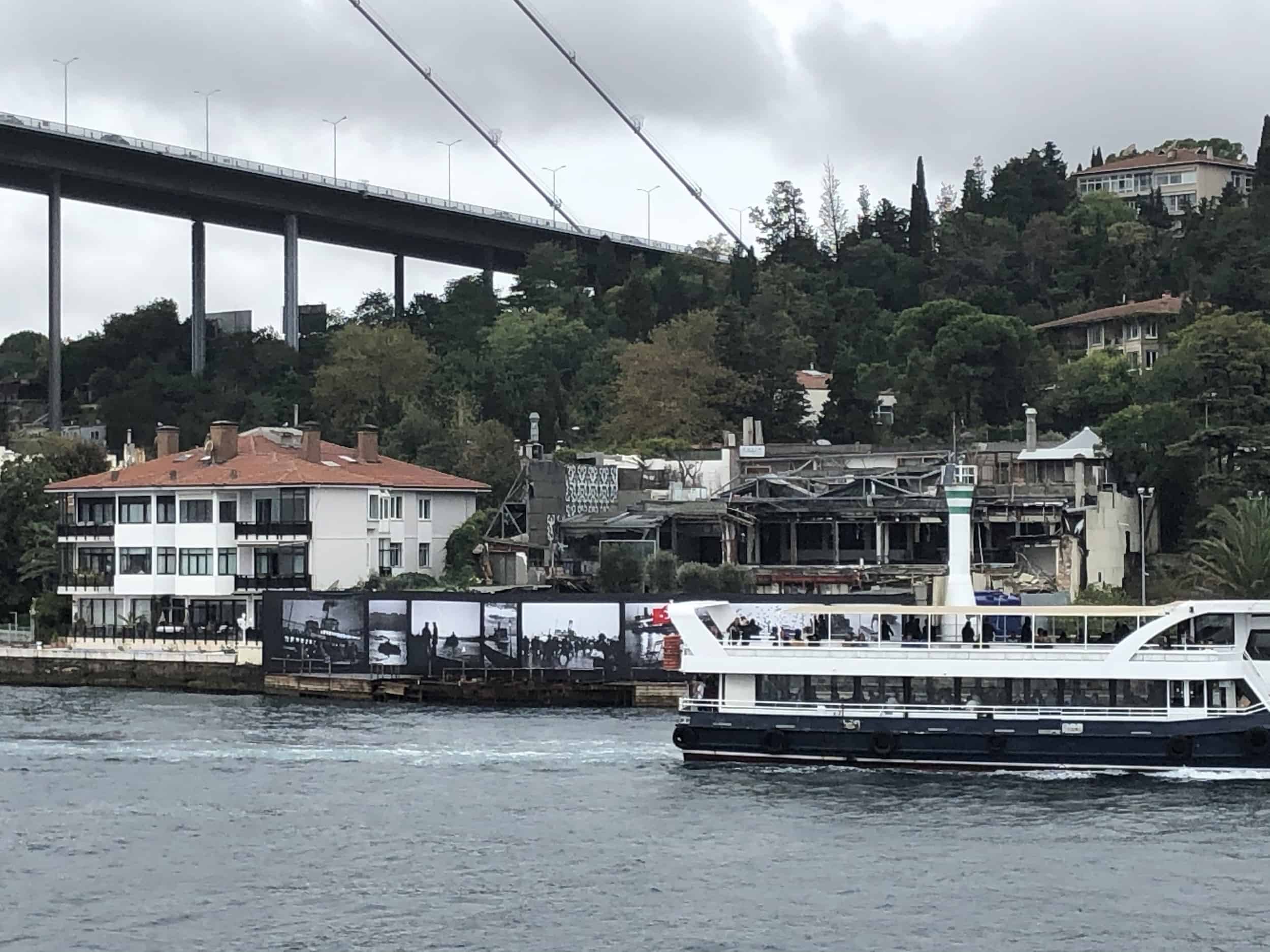
I had never visited Reina for the nightclub, but had been there a few times for dinner. There were seven restaurants attached to the club serving different types of Turkish and international cuisine. It was one of the most popular weekend hotspots in Istanbul and I have many good memories there. During my visits, I even spotted a few Turkish and international celebrities. The most famous was former NBA star Deron Williams, who was playing with the Beşiktaş basketball club at the time.
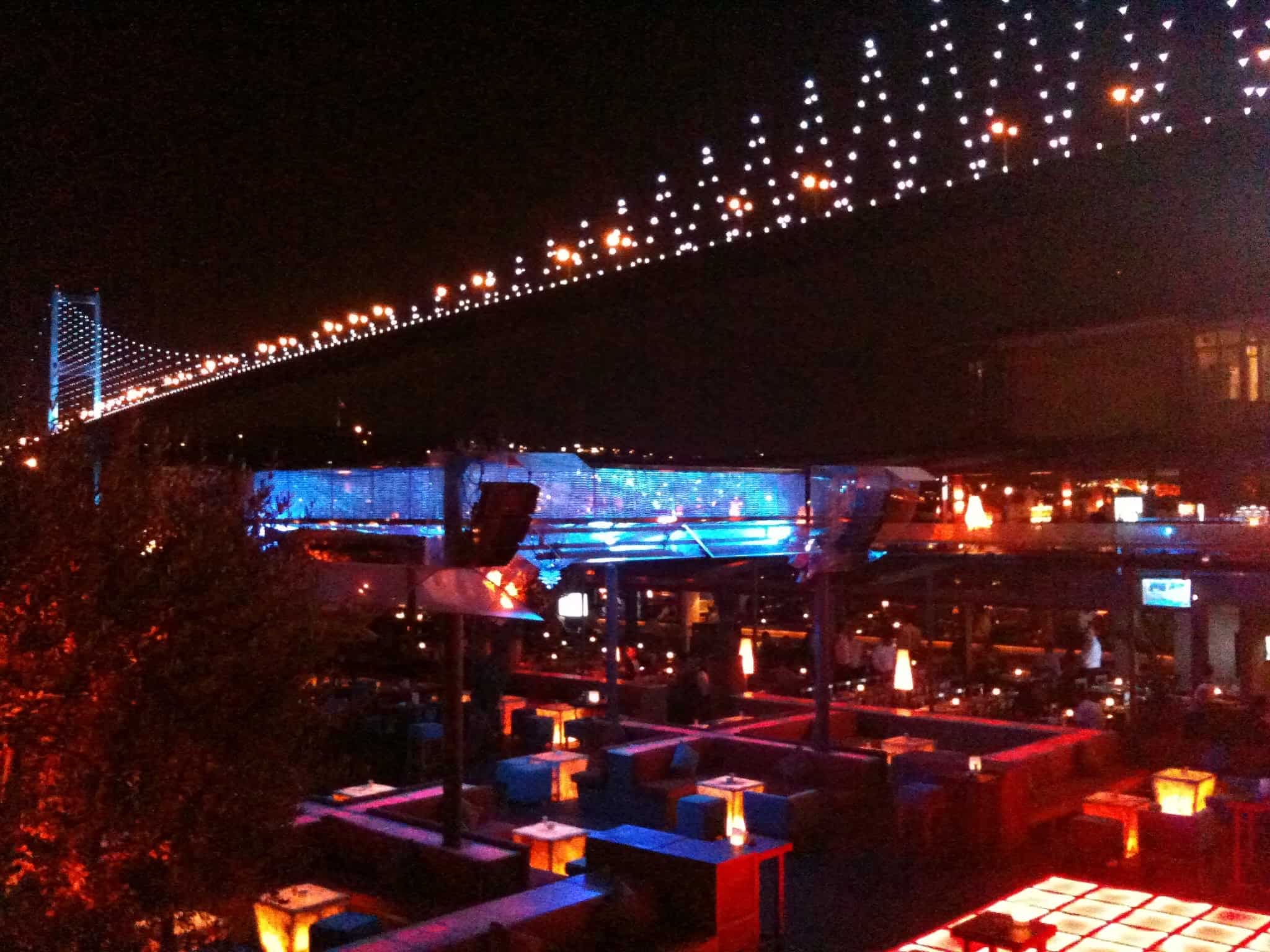
Feriye Palace
Finally, on the south shore of Ortaköy, best seen from a ferry, is Feriye Palace (Feriye Sarayı). This former Ottoman palace was commissioned by Sultan Abdülaziz in 1871 and designed by Sarkis Balyan. It was built to house extended family members of the Ottoman Imperial Court deemed suitable by the Sultan. They were able to live at Feriye Palace until March 3, 1924, when the Ottoman Caliphate was abolished. Feriye means “secondary” or “auxiliary” in the Ottoman language.
Feriye Palace consists of three main buildings on the waterfront. A small two-story building as well as the concubines’ ward are also on the waterfront, and a few outbuildings sit on the backside. The buildings have been used by various educational institutions since 1927.

Galatasaray University
The main buildings on the left and in the center are currently occupied by Galatasaray University (Galatasaray Üniversitesi). These buildings hosted the girls section of Galatasaray High School from 1967 to 1992, when they were turned over to the newly-founded university. The center building was damaged by fire on January 22, 2013. It’s in the process of being restored (as of November 2024) and will continue to serve as an educational institution in the future.
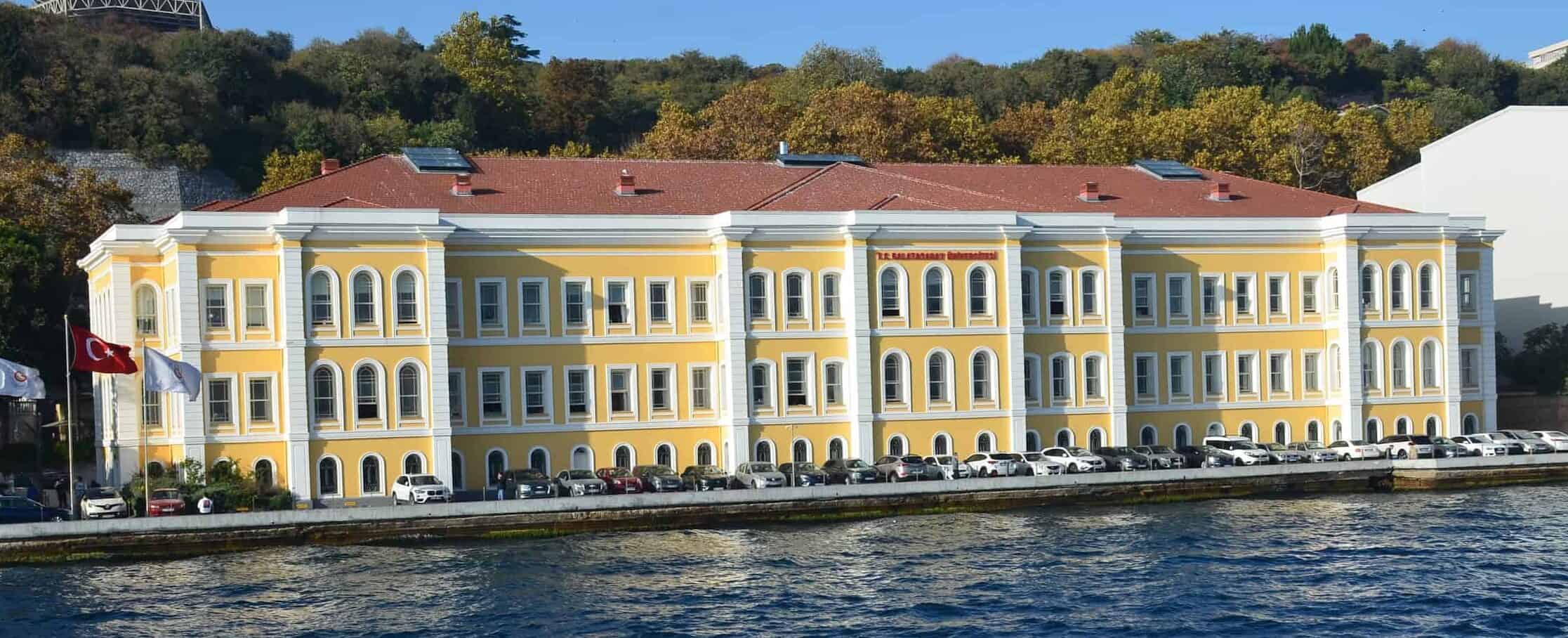

Kabataş Boys High School
The main building on the right has been used by Kabataş Boys High School (Kabataş Erkek Lisesi) since 1928. Established in 1908 by Sultan Abdülhamid II and originally located in Kabataş, it’s one of the oldest and most prestigious high schools in Turkey. It has been coeducational since 1994.

Sultan Abdülaziz was found dead in the building on June 4, 1876, under mysterious circumstances, shortly after he was dethroned. The room in which his body was found is currently used as the principal’s office.
Street Food in Ortaköy
Ortaköy is famous for two street foods: kumpir and waffles. There’s an entire row of kumpir and waffle joints lining the street that leads from Muallim Naci Avenue to the Büyük Mecidiye Mosque. Take your pick. They’re pretty much all the same.
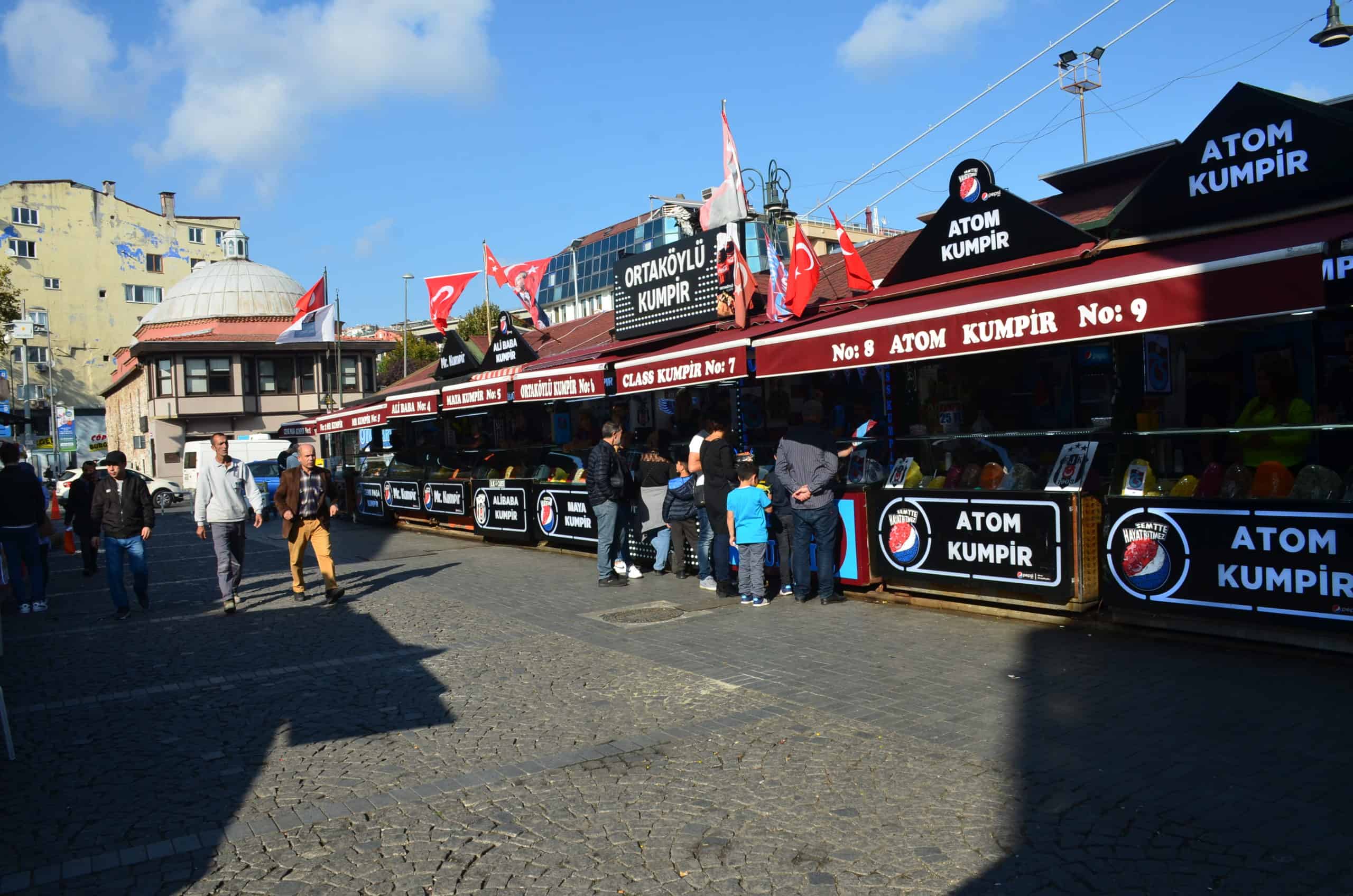
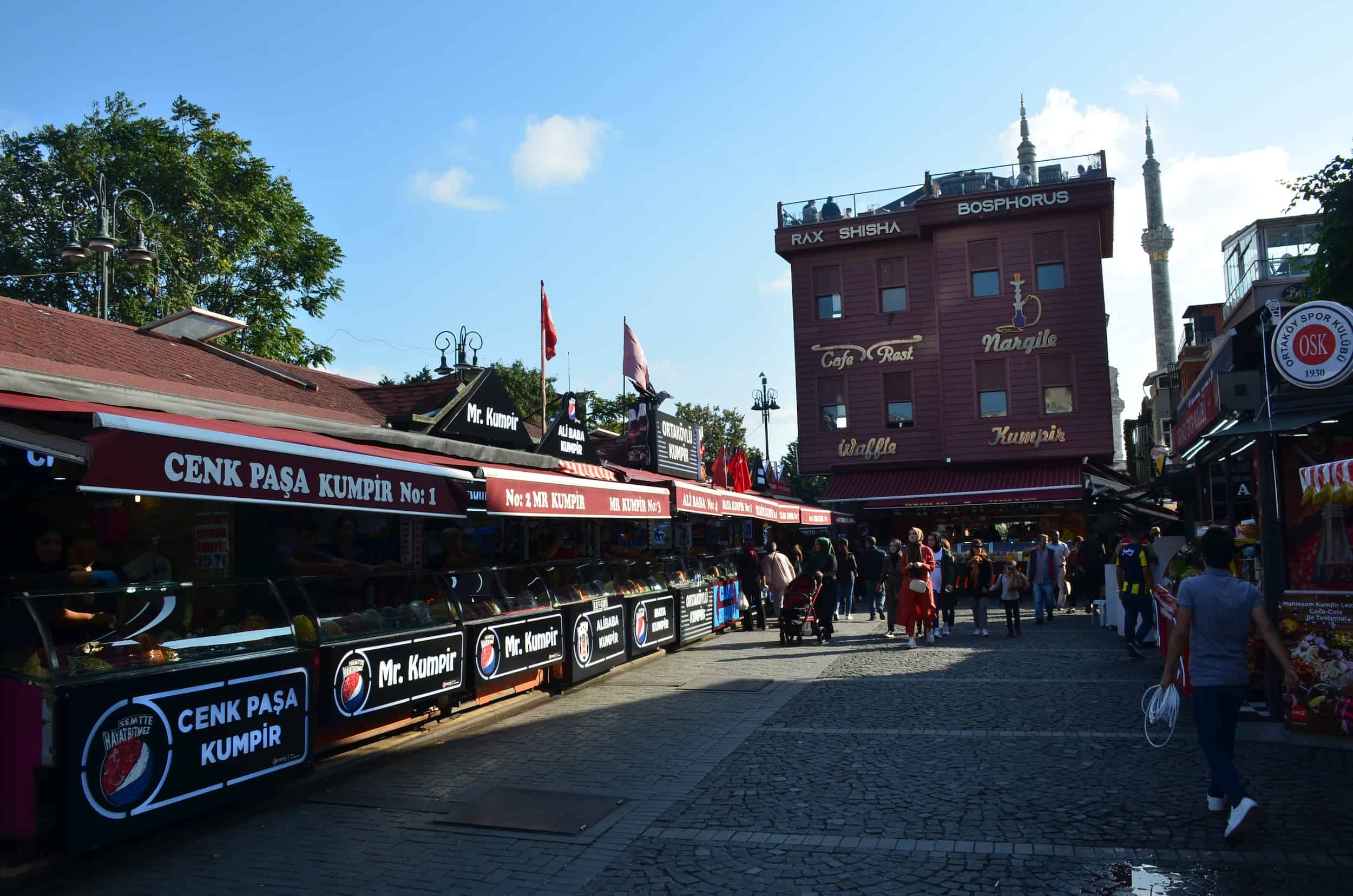
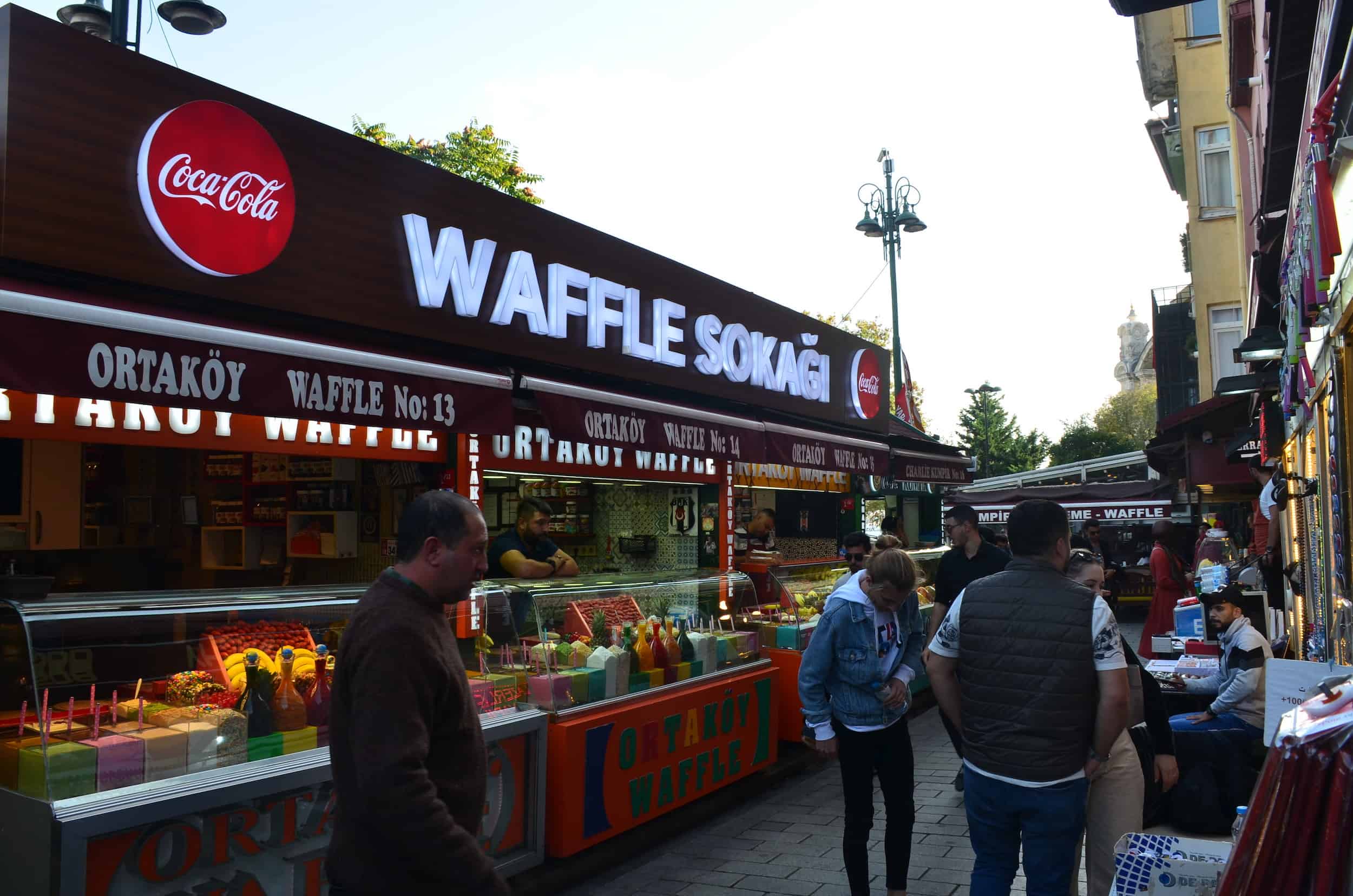
Kumpir
A kumpir is essentially a potato wrapped in foil and baked in a special oven. The potato is sliced down the middle and the insides are mixed with unsalted butter and kaşar cheese. After that, you can take your pick of toppings. They include mayonnaise, ketchup, pickles, sweet corn, sausage, carrots, mushrooms, olives, peas, and more. After you’ve created your perfect kumpir, you can have a seat somewhere in the picturesque village and enjoy your meal.
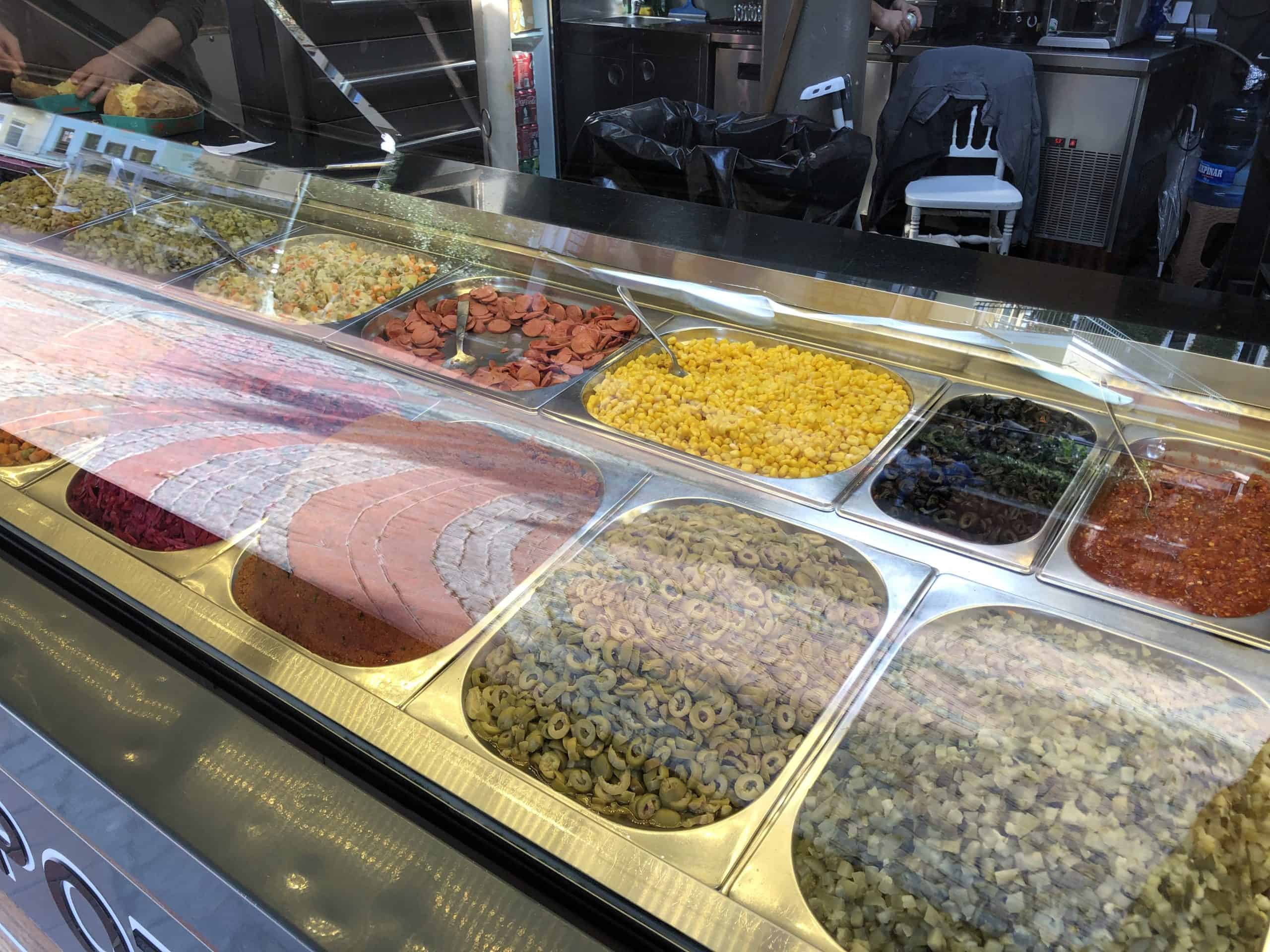

Alaca Café
Usually, I just grab a kumpir from one of the stands, but on one visit we ate at Alaca Café. It sits at the end of the street near the Bosporus. They make your standard kumpir and it’s as delicious as they get. The only advantage about Alaca Café is that they have seating.
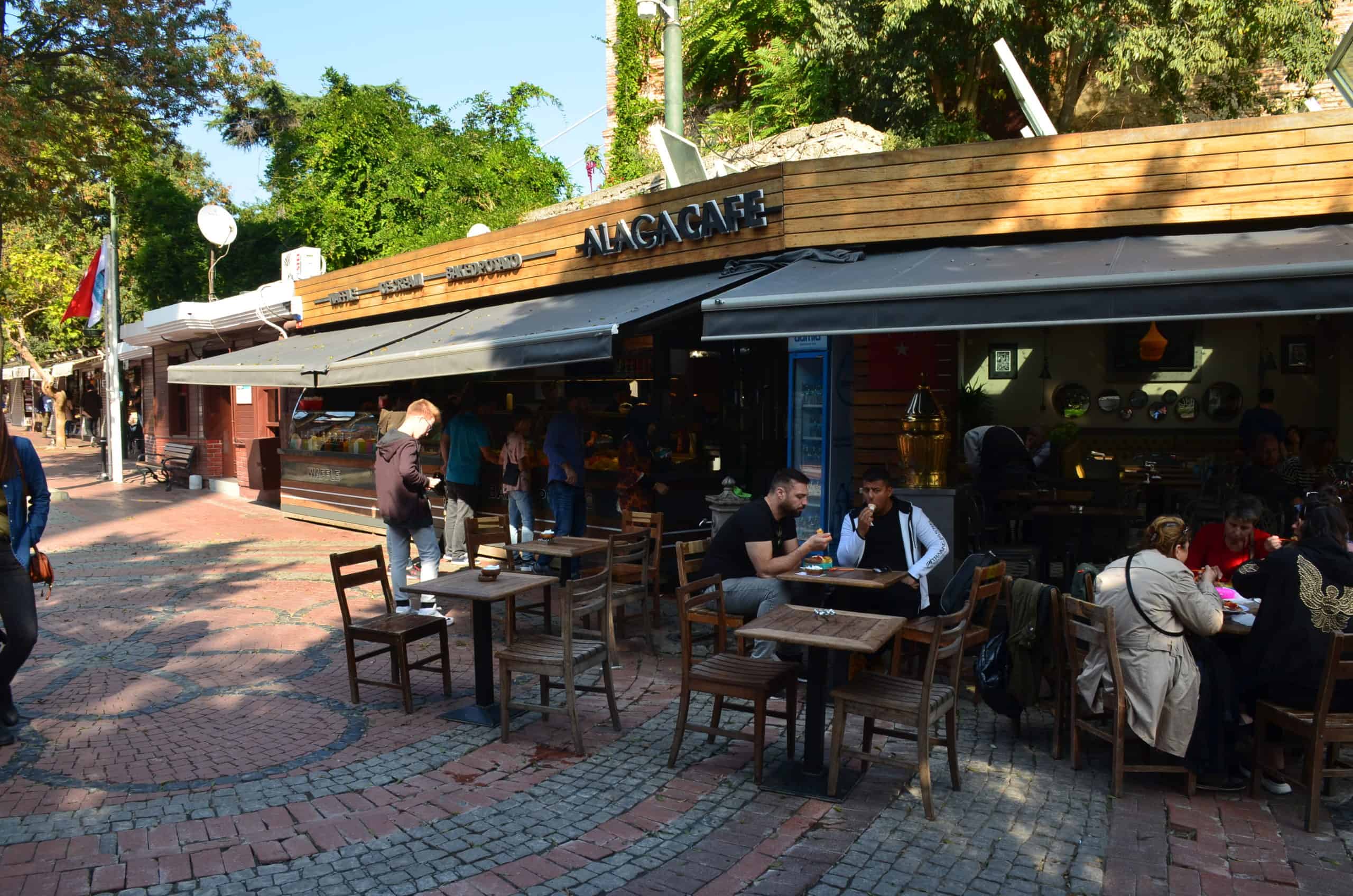
Waffles
If you want to satisfy your sweet tooth, you can get a waffle as well. They aren’t as prevalent as the kumpir stands, but you’ll find a couple waffle places mixed in. The concept is pretty much the same. You start with a basic waffle and add toppings, starting with a spread such as chocolate, strawberry, vanilla, pistachio, or nutella. After that, you can throw on sliced fruits, sprinkles, chocolate chips, and others.


